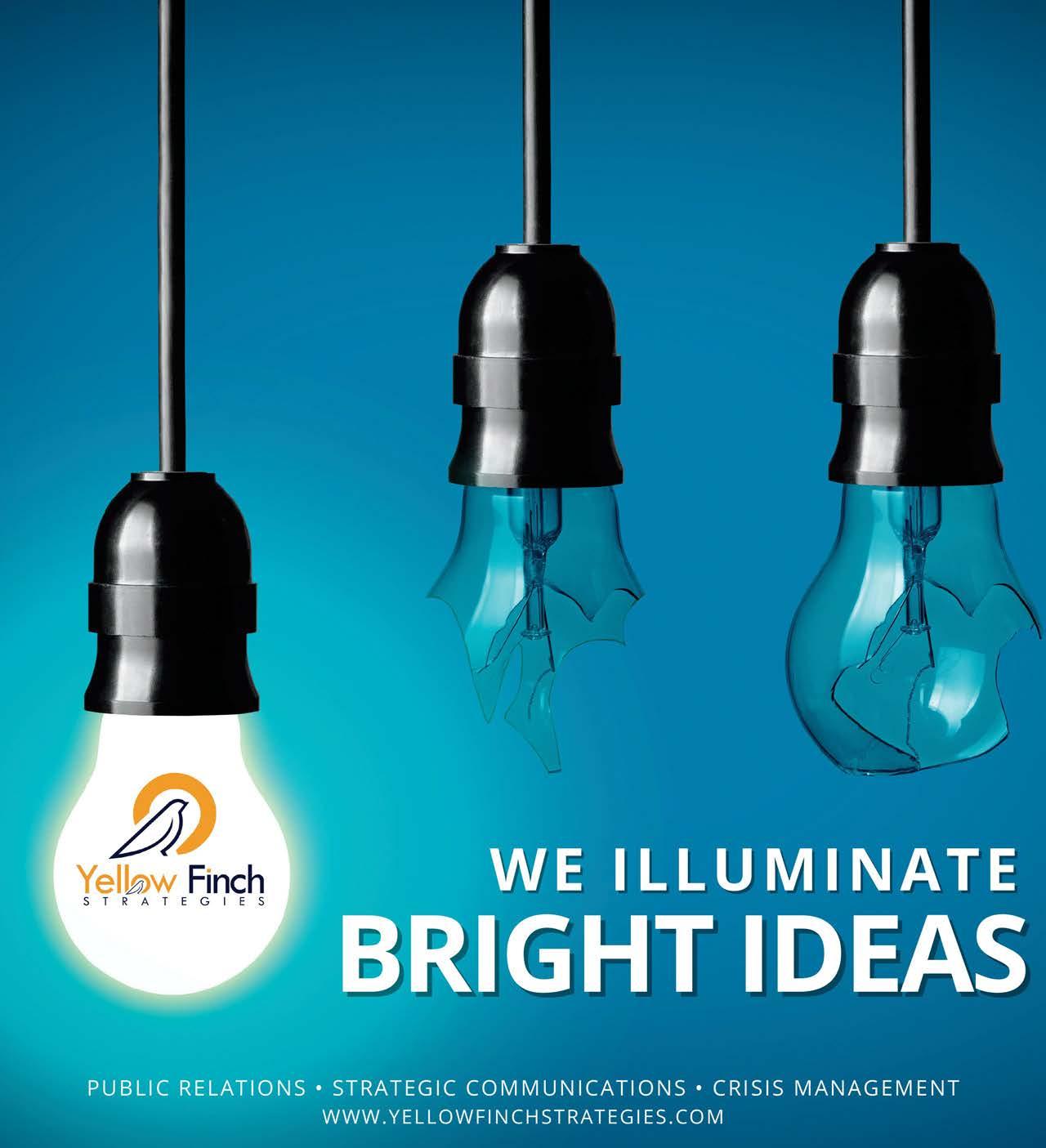




Florida is welcoming record numbers of new residents and tourists, and the race is on to update critical infrastructure to meet the rising demand.
The Florida engineering community is rising to the challenge, designing civil and structural projects to meet this growth and prepare for even more demand in the future.
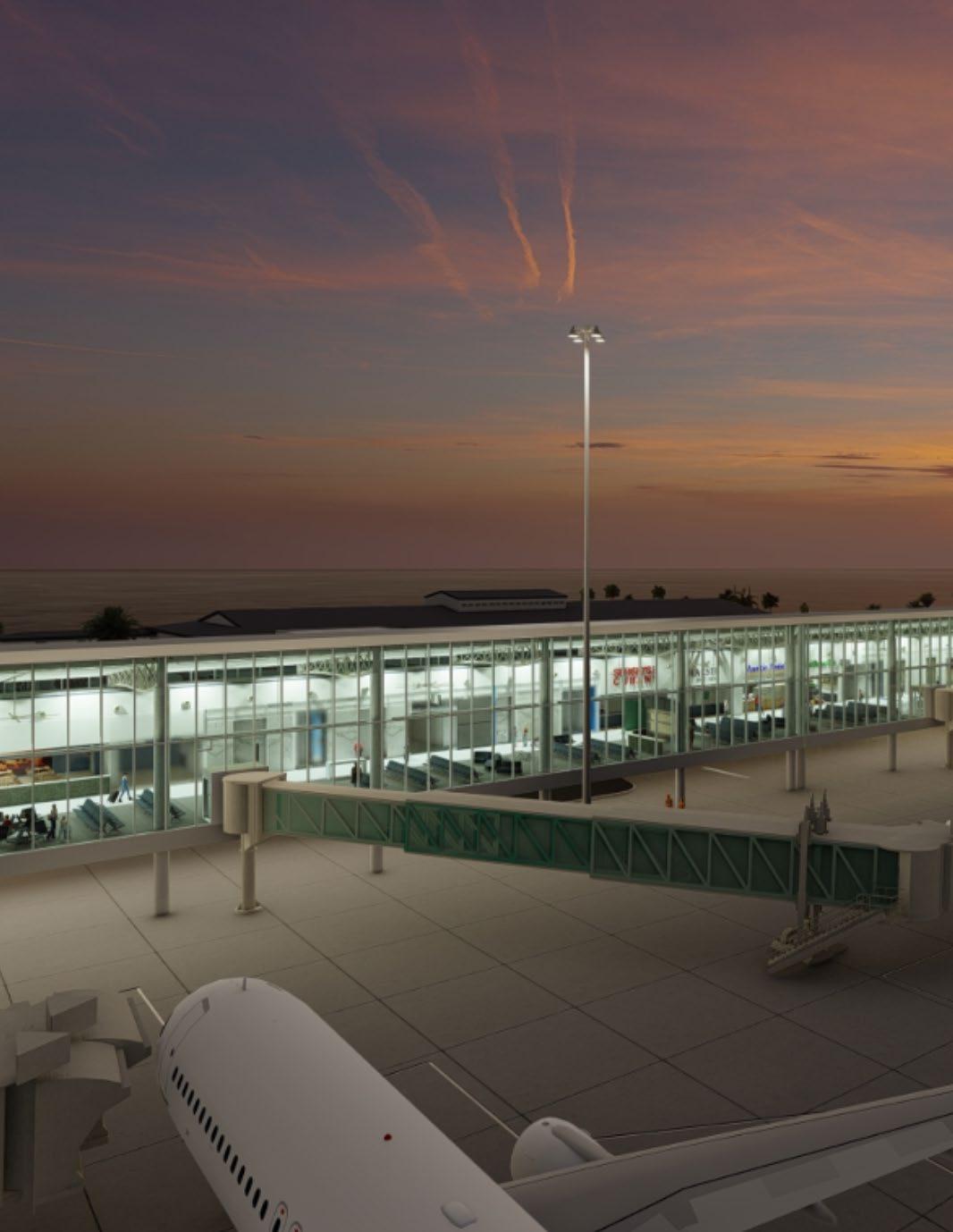
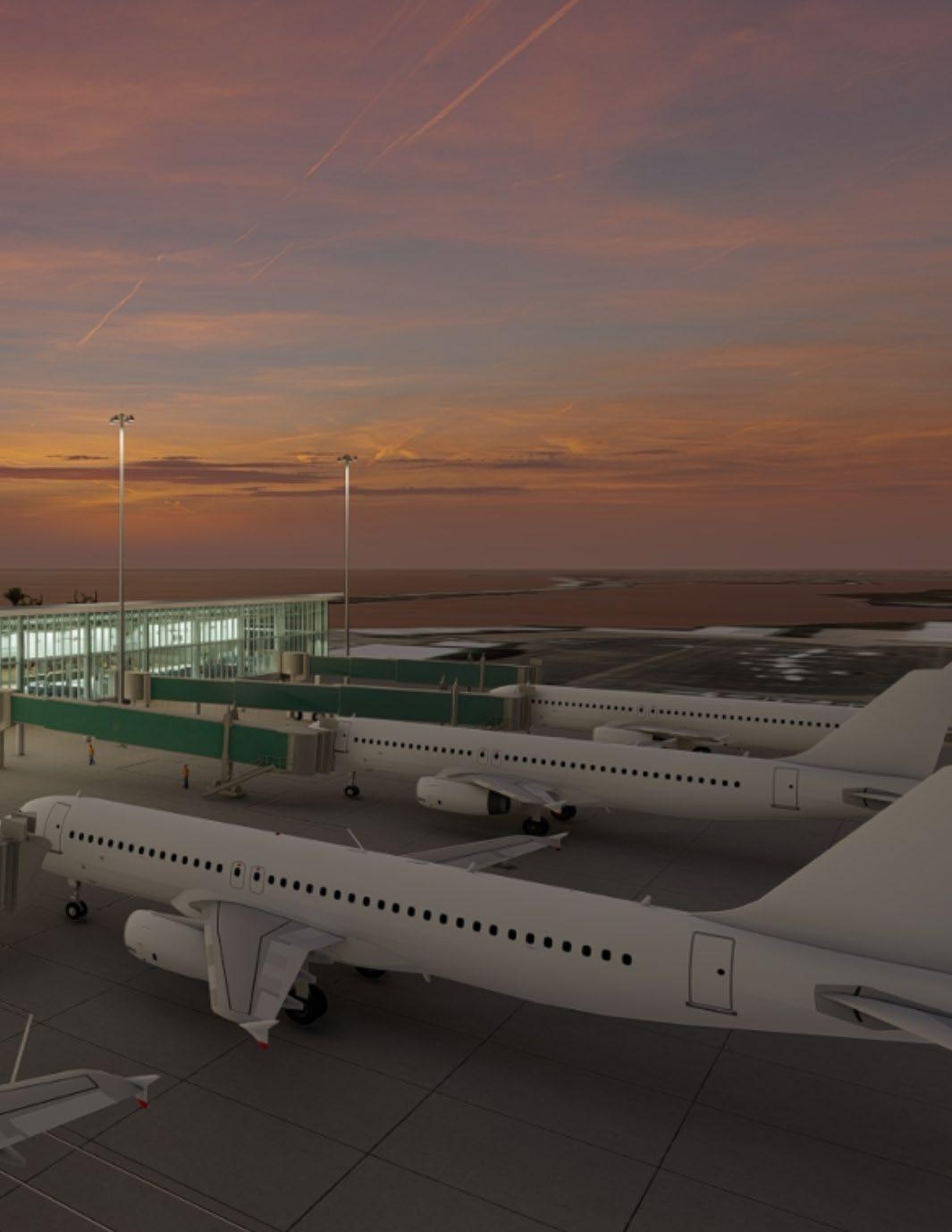
If you have been in Florida for any amount of time, you have witnessed the state’s growth first hand.
You see new neighborhoods, commercial developments, schools, hospitals, parks, and research and industrial centers. You drive on new roads and bridges and through infrastructure construction. You read about new water and wastewater projects across the state and the expansion of our airports and seaports to welcome record numbers of new residents, visitors and shipments. You also read about the environmental restoration and enhancement projects designed to offset the negative impacts of our increased population.
Of course, our engineering community in the Sunshine State isn’t just seeing these changes and new projects being put in place to accommodate our rapidly growing population. We are the ones responsible for planning and designing for our future, ensuring the infrastructure is in place before it is needed, and ensuring the natural treasures of the state are not sacrificed along the way.
That’s not hyperbole. Florida faces a plethora of pressures from the environment, Mother Nature and our own human footprint. It’s up to us as engineers to provide solutions to keep these pressures from becoming untenable problems.
We saw this last month as Hurricane Idalia moved through the Big Bend. By the next day, all bridges and more than 6,500 miles of highway in areas affected by the hurricane had been cleared by the Florida Dept. of Transportation (FDOT). While many Gulf Coast counties dealt with flooding, reports are that the good news is the storm’s toll on infrastructure and buildings was relatively insignificant.
Nevertheless, hurricanes will keep knocking on our door. Concerns about storms, flooding and preserving our natural resources and coastal communities will persist.
Fortunately, as you’ll read in this issue of Engineering Florida, members of the Florida Engineering Society (FES), the American Council of Engineering Companies of Florida (ACEC Florida), the American Society of Civil Engineers Florida Section (FLASCE), the American Society of Highway Engineers (ASHE), the Florida Structural Engineers Association (FSEA), and the Society for Marketing Professional Services (SMPS) Florida Chapters are up to these challenges.
Professional engineers are designing Florida’s future. From alternative water sources to state-of-the-art multimodal networks, engineers of every specialty are finding and creating cutting-edge solutions to better our quality of life while protecting the natural resources that make Florida so unique.

As you read these stories about growth in our state and our profession, let us be thankful for the thoughtful planning generations of engineers before us took part in. And as we look to the future of Florida, we know that it’s the engineers of today and the innovative and careful design we do that will keep us on track for a fruitful tomorrow. It is up to professional engineers to come together, stay together and work together for success!
Our livelihood and home depend on us.
Kelly Cranford P.E., Env. SP FES Past President Scott Martin P.E., LEED AP, DBIA ACEC Florida Past President
Scott Martin P.E., LEED AP, DBIA ACEC Florida Past President
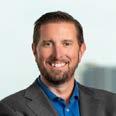

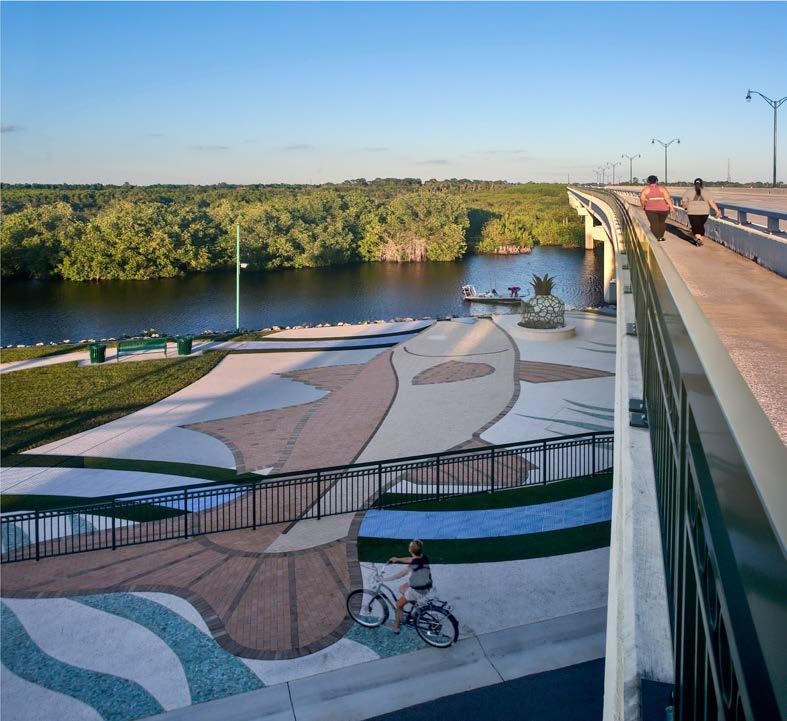

Editor-in-Chief
Stacey Butler
Managing Editor
Joe VanHoose
Layout Editor Claire Jordan
Creative Direction
Hannah Groseclose
Contributors
Thomas Ehlers
Lindsey Ranayhossaini
Johnathan McGinty
Ad Director
Meghan Shiner
Katie Batill-Bigler, CPSM
Patel, Greene & Associates | SMPS
Stacey Butler, Marketing Specialist
FES | ACEC Florida
David Cowan, Jr, PE, ENV SP
Chen Moore and Associates | FES
Kelly Cranford, PE, ENV SP
Culpepper & Terpening | FES Past President
Charles W. Davis, Jr, Ph.D.
Associate Professor at Embry-Riddle Aeronautical University | FES
Allen Douglas, Executive Director
FES | ACEC Florida
Sunserea Gates, PE
VHB | ASHE
Carmelo Giglio, PE, SI
United
Professional Engineering | FSEA
Andy Lauzier, PE
HDR | ACEC Florida
Scott Martin, PE, LEED AP, DBIA
Walter P. Moore | ACEC Florida Past President
Jennifer Nix McGerald, CPSM
RS&H | ACEC Florida
Edie Ousley, President
Yellow Finch Strategies
Cherie Pinsky, Chief Operating Officer
FES | ACEC Florida
Adam Schildmeier, PE
WGI | FES
Ann Schiola, CPSM CIP-II
RS&H | ACEC Florida

Meghan Shiner, Communications Coordinator
FES | ACEC Florida

Jignesh Vyas, PE
Parsons Corporation | ASCE

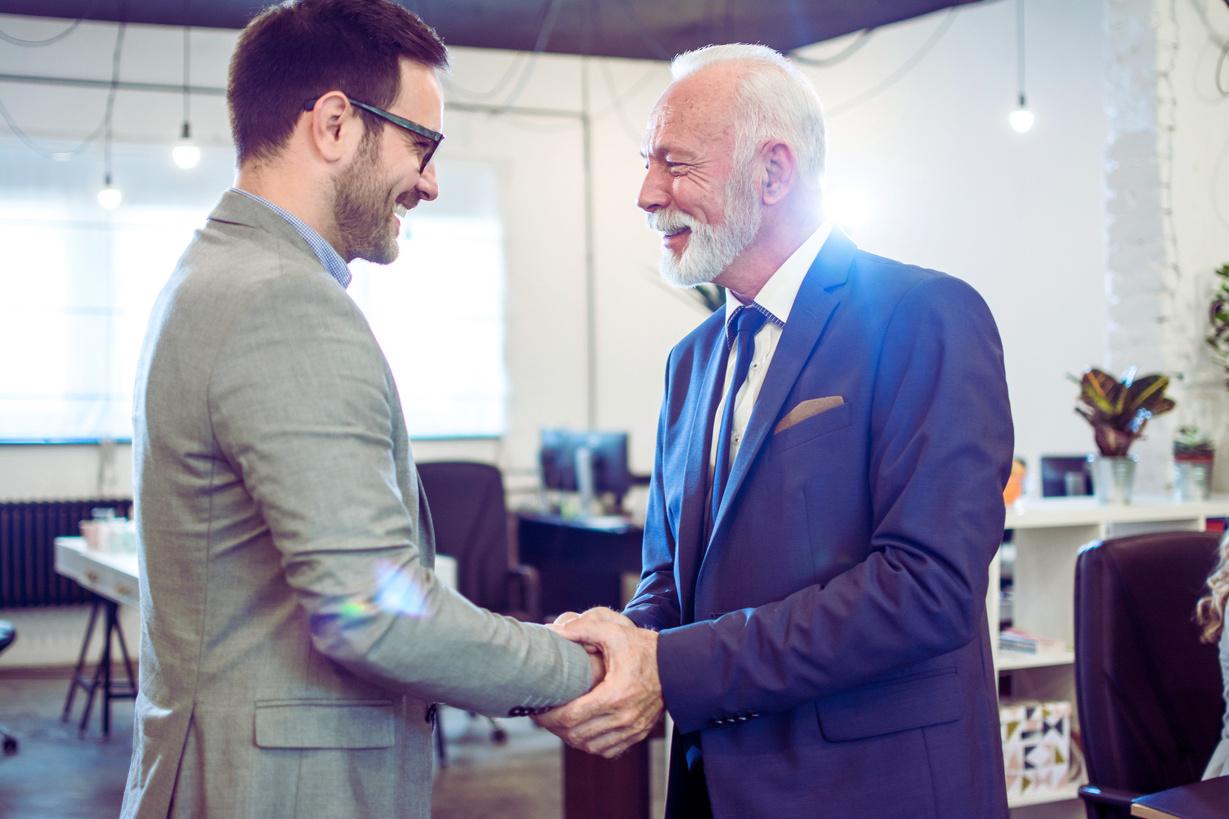

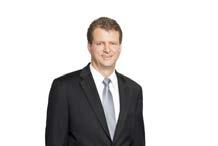
The 2024 session of the Florida Legislature will begin January 8, but note that committees have begun meeting to move bills through the legislative process. At the time this article was written, no bills filed affect the engineering community. However, there are issues and potential challenges that warrant our attention.

ACEC Florida has a significant concern in the recent Fourth Circuit Court ruling that CEIs working as subs to a prime consultant do not have sovereign immunity protection on public projects since there is no direct contractual relationship with the owner.
ACEC has filed an amicus brief with the Court of Appeal in hopes they will overturn the decision, but a decision is not expected until the summer of 2024. Legislation to clarify the statute is being developed by ACEC Florida to clarify that CEIs working as a subconsultant under any contract with a state or local government agency shall be protected under the sovereign immunity statute.
On the FES side, we expect legislation will be filed similar to a 2023 legislative proposal to weaken licensing regulations for multiple professions. For professional engineers, the 2023 bill would have allowed out-of-state professional engineers to obtain a Florida license, even if they only meet two of the three requirements of a degree from an ABET-accredited program, the passage of the fundamentals and PE exams, and four years of experience.
The licensing bill is intended to make it easier for licensed professionals in other states, such as nurses, teachers, engineers and others, to obtain licensure in Florida to alleviate the worker shortages experienced in many areas. FES has been communicating with legislators involved in this effort that more than half of the licensed professional engineers in Florida reside in another state, and that PE license changes are not needed.
Over the past few years, we have seen multiple attempts to weaken, and even sunset, professional licenses. This appears likely to continue in the years to come.
A great concern for many Florida engineering firms is the exemption to the Consultants Competitive Negotiation Act (CCNA), which was passed during the 2023 legislative session. This exemption alters the selection process for consulting firms working with state universities, allowing price to be considered during the initial phase of procurement. While there are currently no reports of local governments pursuing a similar change, the precedent set by the state raises concerns.

Leadership of the State University System has agreed to support legislation to require a study of the projects procured post-CCNA, but that will take a few years. Multiple studies on this issue over the last 50 years have concluded that the absence of CCNA/QBS saves a small amount of money on design procurement but increases construction costs at a level far above the design savings. We believe that future studies related to state university projects will prove the previous studies correct.
In the water resources arena, the proposed stormwater rule from the Florida Department of Environmental Protection (FDEP) continues to be a policy priority. The proposal requires a minimum 55% reduction in nitrogen and 80% reduction in phosphorus on new developments and even greater reductions in impaired watersheds.
While FES and ACEC Florida members and consultants support improvements to stormwater management regulations that will benefit Florida’s water quality, we will continue to work with stakeholders to find ways to improve the cost-effectiveness of the rule. Currently, the projected cost of the rule exceeds $1.5 billion over the first five years, requiring ratification by both the House and Senate.
As the legislative session unfolds in 2024, it is imperative for the engineering community in Florida to remain vigilant and engaged in these critical matters.
Collaborative efforts, advocacy, and continued dialogue will be essential in navigating the challenges and ensuring the best outcomes for the engineering profession.

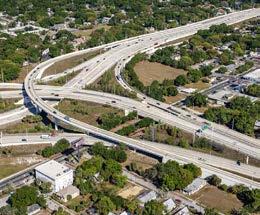

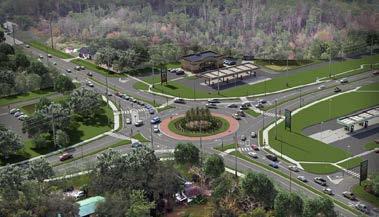
The topic of ethics in engineering has been covered in almost every conceivable manner.
Most engineers have taken ethics to satisfy a curriculum course requirement or as continuing education for licensure renewal. These courses often cover such items as ethical codes for engineers or ethical case studies. But risk management, and specifically how it relates to ethics in the practice of engineering, is a topic seldom covered.
Any profession, especially the engineering profession, operates in a sea of uncertainty and risk. Successful engineers are the ones who are able to minimize the uncertainty and risk to avoid adverse consequences. Of course, minimizing risk and eliminating risk are two very different things.
When the question is posed regarding if an engineer can be sued for a certain action, an accurate response always is: “Anyone can be sued by anyone else at any time for any reason.” In the world of licensure law, however, the risk of being sued is replaced with the risk of having a complaint filed against an engineer’s license to practice engineering.
So, let’s take a look at how ethical engineering –or the lack thereof – can have serious risk managem ent implications, which in turn can have an effect on your ability to practice.


As former counsel to the Florida Board of Professional Engineers (FBPE), I have seen countless cases involving
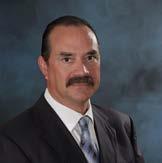
ethical issues that turn a disgruntled but passive client into a vociferous complainant, merely for a lack of simple risk management.
For example, in Florida the term “misconduct” is defined to include conduct that can be categorized as ethically improper or deficient. An engineer’s license can be disciplined under the rubric of “misconduct” for several acts, including:
• Performing an engineering assignment when not qualified by training or experience in the practice area involved.
• Revealing facts, data or information obtained in a professional capacity without the consent of the client or employer.
• Expressing an opinion publicly on an engineering subject without being informed as to the facts and being competent to form a sound opinion.
• Soliciting or accepting gratuities without a client’s knowledge.
• Failing to preserve a client’s confidence or to disclose a conflict of interest.
Going above and beyond mere ethics, the risk implications to one’s engineering license stemming from the above actions are staggering. If any one of the above actions occur, a disgruntled client who might not have taken any action at all may file a complaint with the FBPE. This is especially true if the above actions occur in conjunction with below-standard work.

Another commonly used term to describe improper conduct with ethical and risk management implications is “negligence.” In regards to the practice of engineering, Florida (as do many other states) defines negligence as the failure by a professional engineer to utilize due care in performing in an engineering capacity or failing to have due regard for acceptable standards of engineering principles.
Relating to risk management, the threat of negligence can be mitigated by clearly enumerating specific remedies or limitations in the initial contract with the client. In this way, the expectations of the engineer are clearly stated, with damages determined by the contract. Even though damages can be determined based on the reasonable expectations
of the parties – thereby making enumerated limitations in the contract moot – courts will usually attempt to adjudicate within the four corners of the contract. Therefore, if remedies or limitations are clearly stated within a written contract, the risk for civil suits and complaints can be reduced.
In addition, the threat of negligence can be mitigated by clearly enumerating specific project parameters in the contract. This is important, as many clients who feel as though they were wronged by a contract “wrinkle” or “loophole” may also feel as though they have no available avenue of recompense, and in turn resort to filing a complaint against the engineer’s license. While it is important to be flexible in order to suit a client’s needs, clearly listing foundational project parameters will go a long way in avoiding a complaint, or even a civil suit, later.
Engineers have a fiduciary duty not only to their clients but also to the public at large, as an engineer’s work may have an effect on the health, safety and welfare of the general public. As the saying goes, “With great power comes great responsibility.” (Not to mention a great need for risk management,)
Take for example a scenario where you, a PE, agree to take on a project at a rock-bottom price. Given the state of the economy, many engineers find themselves agreeing to projects at half what they would normally charge. Nevertheless, signing on for a project at a reduced rate does not reduce your obligation to your client (or to the public). Your standard of practice must remain the same whether you charge one dollar or one million dollars for your services.
If you were to cut corners on a project simply because you weren’t paid as much as you are accustomed to, an ethical complaint wouldn’t be filed against your license. However, your risk management “spidey-senses” should be tingling, as cutting corners opens your license to discipline for negligence or incompetence.

Do not let the fact that you are getting paid less for a project inject the venom of indifference into your work, as that will no doubt increase the risk of endangering the health, safety and welfare of the general public and possibly open your license up to a complaint.
Another violation with ethical and risk management implications is signing and sealing plans or specifications that were not prepared by the engineer or by someone under his or her responsible charge (known as “plan stamping”). In addition to the professional implications of signing and sealing plans that you have not prepared or sufficiently reviewed, this violation carries with it other ethical concerns and risks.
The law allows you to authenticate documents through your engineering seal, much like a notary. By sealing a set of plans or specifications, you are effectively stating that they are true and correct. When one considers that the lives, safety, health and welfare of the general public are dependent upon engineering judgments, decisions and practices incorporated into structures, machines, products, processes and devices, “plan stamping” takes on a far more sinister tone. As with the first example, this ethical issue opens you up to great risk, as you are now responsible for the plans you have rubber-stamped.
Again, engineers have a fiduciary duty not only to their clients but also to the public at large. Balancing the interests of the client and the public can be tricky.



For example, if your testimony or report is untruthful, deceptive, or intentionally misleading, or if you omit relevant and pertinent information, the risk of repercussions against your license skyrockets. Furthermore, if these actions occur in the context of a permitting decision, public repercussions are possible. While generally only damages caused by an engineer can be recovered, that limitation could be broadly expanded to include the effects of rubber-stamped plans or lackadaisical workmanship.

The golden rule is to conduct all your affairs with integrity and honor, and to approve and seal only those documents that conform to acceptable engineering standards and safeguard the life, health, property and welfare of the public. In that way, you can be sure that you have practiced ethically, which in turn goes a long way in practicing good risk management.

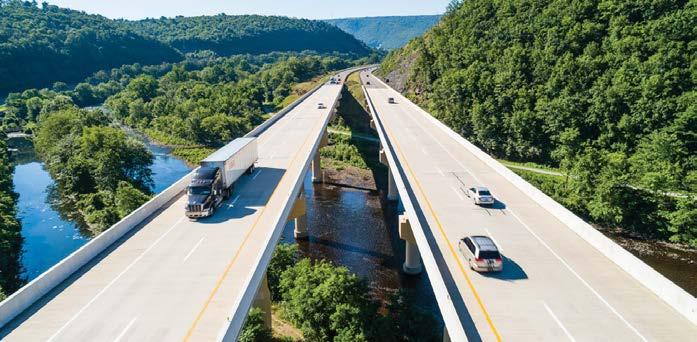


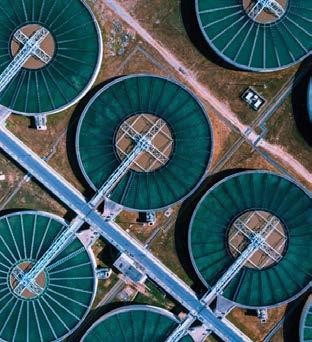
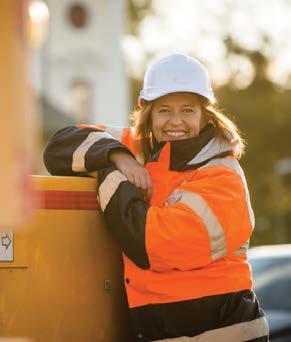

In October 1966, Walt Disney introduced what was then called the “Florida Project,” a new futuristic community that would leverage new technologies and ideas. It would never be completed because it would evolve with the times.
In introducing what would become the Experimental Prototype Community of Tomorrow, more commonly known as EPCOT, Disney noted why Florida was chosen for his sweeping new venture. “Here in Florida, we have… the blessing of size. There’s enough land here to hold all the ideas and plans we can possibly imagine.”
Indeed.
Florida has seen nearly a century of exponential population growth. Since 2010, the state has grown by an average of 1.3% per year before being named the nation’s fastest-growing state in 2022. That level of growth, that quick, requires a robust pipeline of infrastructure improvements to keep pace with the population, creating a demand for engineering professionals to support those improvements. Conversely, it could be argued that engineering has driven that same growth. If you build it, they will come. Engineers are building it, and people are coming –more and more every year. The influence of engineering can be felt and seen throughout Florida across all sectors of the economy. From environmental remediation to renewable energy, aerospace and defense to emerging technologies, to the real estate that houses it, and to the infrastructure that connects it all – engineers are the propellant powering the growth and expansion of this state.
Florida is one of our industry’s many, many success stories. The state of engineering is a leading indicator of our nation’s overall economic health. Our industry is responsible for nearly 3% of our total GDP and 3% of all jobs.
Engineering contributes more than $300 billion to the U.S. economy every year, with Florida among the top contributors in the nation, adding $30 billion to our
nation’s GDP. If engineering is a leading indicator of our nation’s economic health, Florida’s engineering industry is a critical component of that health.
For nearly half a century, the American Council of Engineering Companies of Florida (ACEC Florida) has worked to strengthen the business of engineering through advocacy, political action, education and growth opportunities. Through various efforts on all these fronts, ACEC Florida demonstrates how doing business with member firms supports better business practices, with its members maintaining impeccable ethical and professional standards.
Florida is the country’s top destination for both factories and families. It’s a chicken-egg question whether engineering created that growth explosion, but one thing is certain: Florida’s growth would not be feasible or even desirable without our industry. A “blessing of size” can be a curse without the infrastructure to support it. Engineers, our knowledge, and our projects are at the very heart of Florida. It’s more important than ever for engineers to be proactive in leadership and policymaking, continuing to work towards a smart, common-sense, balanced foundation focused on people, the planet, preparedness and profit.
The contributions of our industry have been vital to making the Florida of today possible, and they will be even more invaluable in sustaining it. Our growing population, increased urbanization and vulnerability to natural disasters require the expertise of engineers to design, construct and manage our state’s infrastructure. Florida is a big state with big ideas and big plans. At 55,000 strong – and growing – Florida’s engineers are well-positioned to bring those ideas and plans to fruition, and ACEC Florida is the mechanism for all the voices of engineers to be heard as one.
The future for engineering in the Sunshine State is brighter than ever.

Here in Florida, we have… the blessing of size. There’s enough land here to hold all the ideas and plans we can possibly imagine.
WALT DISNEY
For more than 90 years, Walter P Moore has engineered structures and infrastructure for communities worldwide.
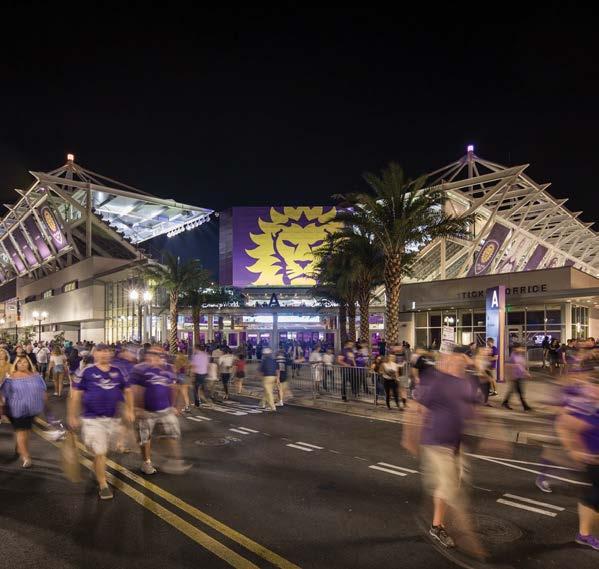
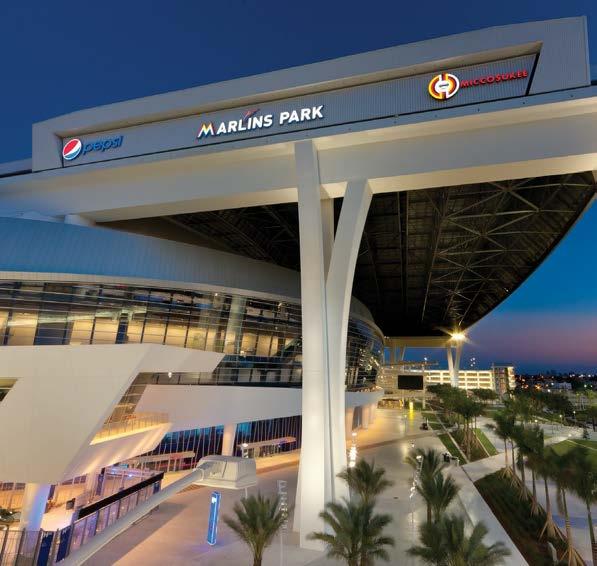
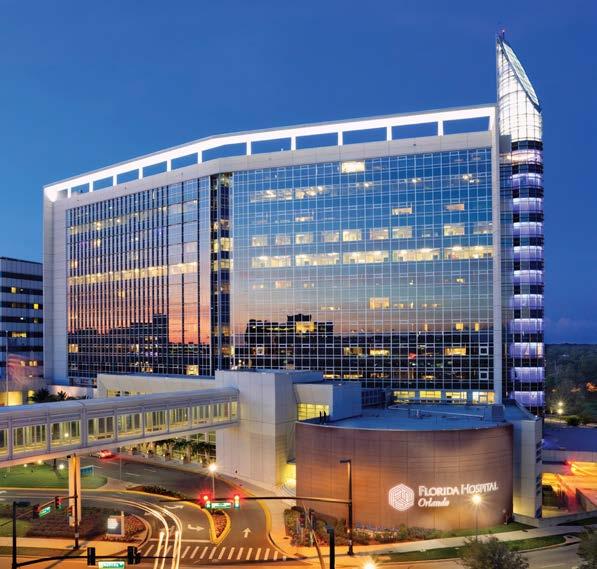

walterpmoore.com
Infrastructure
Structures
Diagnostics
Technology
Growth is a key measure of success, and, in Florida, all the metrics are pointing to a bright future.
For the first time since 1957, the state is the fastestgrowing state in the country. A population growth rate of 1.9% – coupled by tourism growth that led to a state record of 137.6 million travelers in 2022 – has helped create a booming travel industry in the state.
Today, tarmacs and terminals across Florida are being upgraded, renovated and expanded to deal with the rise in air traffic that results from the increase in travel.

Tampa International Airport is one of those airports.
The state’s third-largest city by population, Tampa sits in Hillsborough County, the state’s second fastest-growing county since 2012. Tampa International Airport (TPA) Vice President of Planning & Development Jeff Siddle and his colleagues took this into account when developing the airport’s current master plan.
 Photo: The new Terminal C at Orlando International Airport opened in late 2022. Source: Greater Orlando Aviation Authority (GOAA)
SkyCenter One is a nine-story office building connected directly to Tampa International Airport.
Photo: The new Terminal C at Orlando International Airport opened in late 2022. Source: Greater Orlando Aviation Authority (GOAA)
SkyCenter One is a nine-story office building connected directly to Tampa International Airport.
“We’re seeing record growth here in Tampa Bay, with close to 140 people a day moving into the area,” Siddle said. “That shows how popular this region has become, but with that come the challenges of being able to meet the needs of all those residents with an airport that is able to serve them.”
TPA relied on its master plan to free up space in the main terminal and pursue a phased approach to alleviate key pressure points across the facility, allowing it to better accommodate an expected 39 million annual passengers in 2042, up from 23 million annual passengers today.
Phase 1, completed in 2018, helped decongest curbsides, roads and the main terminal. Phase 2, which is slated to finish in late 2024, expanded curbside service and developed around the rental car center, including a ninestory office building and express lanes for passengers who aren’t checking luggage.
Construction for Phase 3, consisting of a new 16-gate terminal to be known as Airside D, is set to begin in 2024.
The $787 million project includes a large, cutting-edge security area, modern concessions and retail spaces, spacious hold rooms and state-of-the-art technology boards.


“Our entire plan for Airside D has been to incorporate the latest technology and design methods to create a cutting-edge terminal that’s entirely unique to TPA and Tampa Bay,” Siddle said. “Airside D is truly going to be a marvel of modern travel that is well-planned and wellexecuted from start to finish.”
Throughout these expansion projects at TPA, the Tampa community and environment were top of mind, said Siddle. SkyCenter One, a Phase 2 project that finished ahead of schedule, is the first building in Tampa Bay to earn Platinum-level LEED certification, and TPA is in the process of switching its fleet to electric vehicles. With a community and passenger focus, TPA hopes to meet the needs of travelers from across the world.
“The passenger experience is always our priority here at TPA, and with more people using our airport, our operations and facilities must continue to change and grow to meet the high-quality expectations our guests have of us,” Siddle said.
Panama City’s Northwest Florida Beaches International Airport (ECP) now is ranked fourth in the nation for growth, posting a 58.2% capacity increase from 2019 to 2021.
The Bay County airport is capitalizing on the growth, undergoing expansion
and renovation projects to improve efficiency and comfortability. The projects, approved in Dec. 2022, serve several facets of the air travel experience.
Its $3.5 million parking expansion project – which will create 500 new spaces for long-term, employee and cell phone lots – will raise the total parking capacity to 1,800 spots. Additionally, the Panama City-Bay County Airport and
Industrial District approved a $3.3 million North Terminal Concourse buildout that will renovate 12,500 square feet of unfinished area to add passenger holding areas, public restrooms and concessions. A separate $8 million baggage handling expansion project will boost capacity by updating the make-up and handling areas in the terminal building.
The Key West International Airport’s Concourse A terminal expansion project includes the development of a new concourse and upgrades to existing terminal facilities. It is being undertaken to accommodate the projected growth in passenger volumes and enhance the passenger experience. The groundbreaking ceremony was held in November 2022. Source: Key West International Airport

“As the region continues to grow increasingly popular as a destination, the airport gains opportunities to expand its flight capabilities for our passengers,” said ECP Executive Director Parker W. McClellan Jr. “Our facilities and staff are dedicated to providing a premier flying experience and will continue to adapt to the growth each year.”
Key West is as far south as you can go in the continental U.S., and Key West International Airport’s (KWIA) Concourse A project will allow more individuals to get there.

Expected to be completed in 2025, the $100 million project will add 50,000 square feet of space to be divided into gates, holdrooms, restrooms and support areas. The concourse will connect to the terminal by a pedestrian bridge, while an expanded security checkpoint will serve passengers with four lanes of service.
The project will use no local tax dollars, instead relying on Florida Department of Transportation (FDOT) grant funds, bond proceeds, passenger facility charges and a number of other grants, alleviating potential constraints on taxpayers. It will feature windows on the structure’s south side, while the north will use a curtain wall system to allow natural light and transparency.
Due north from KWIA, the Southwest Florida International Airport (RSW) is in the midst of its own $331 million expansion project.
Centered around improving TSA checkpoints and the overall passenger experience, RSW will convert three existing checkpoints into a single,

16-lane checkpoint while remodeling 164,000 square feet of terminal area. It will add 117,000 square feet of new space, including walkways to connect concourses and a pet relief area. Other project elements include a remote loading dock building, new finishes, advertising displays and an expansion of seating and concessions.
This expansion comes after RSW saw a record 10.3 million passengers in 2022, ranking in the top 50 U.S. airports for passenger travel. The project created hundreds of jobs, serving as the second-largest public works project in Lee County history.

“Southwest Florida International Airport is the front door to our community and supports travel, new business and tourism in our region,” said Lee County Board of Port Commissioners Chair Kevin Raune when commissioners approved the project. “We are pleased to start this essential project that will enhance infrastructure and manage growth while vastly improving the passenger experience at RSW.”
Orange County is the fastest-growing county in Florida, adding more than 250,000 residents from 2012 to 2022. Orlando International Airport (MCO) can certainly feel the effects of this growth.
“The growth in population, tourism and business here in Central Florida reflects a healthy regional economy, which, in turn, affects every aspect of Orlando International Airport,” said MCO Senior Vice President of Public Affairs Angela Starke.
MCO served 50 million passengers in 2022, and the airport is on track to handle more than 55 million in 2023. The recently completed Terminal C eases congestion in its main terminal, as the airport took future passenger projections into account in the design phase of the project.
“The Board of the Greater Orlando Aviation Authority is very sensitive to anticipated future growth and modifies plans to address such,” Starke said. “We are in the midst of updating our Strategic Plan, which will be the blueprint for the next 10-15 years.
“One way we will respond to future growth is to look at connectivity and expand transportation service for seamless connections. Additionally, the strategic plan becomes the basis for our master plan updates, as well as future modifications to our Capital Improvement Plan.”
Terminal C can hold up to 20 aircraft at 15 gates, accommodating 10 million additional passengers since its opening in September 2022. It features facial recognition technology for faster and more secure boarding, automated bin returns in the security area and a state-of-the-art baggage handling system to ensure efficient tracking.
Mega-digital display walls cover the terminal, including a 30-foot-tall “Moment Vault” that showcases Central Florida scenes on a 360-degree canvas.

In addition to the 23 concession areas, Terminal C was built with expansion

in mind. In fact, MCO recently started an expansion project on the terminal that will add eight gates. Additionally, MCO recently approved funding for a pedestrian bridge that will connect Terminal C to the main terminal and other parts of the airport. There are plans for a future 16-24 gate expansion project – or even a Terminal D – in due time.
Beyond welcoming in more flights, MCO is creating a multi-modal hub to serve passengers in the growing Orange County area. The airport’s Terminal Link Station gives access to two current regional rail systems, while ground vehicles have ample access to the airport and its services. MCO is the only airport in the country with an intercity high-speed passenger rail station – bringing mobility throughout the region with trains, planes and automobiles – Starke said.
“MCO is also one of the region’s major economic generators with a close to $42 billion impact,” Starke said. “The greatest opportunity is that we continue to be a vibrant part of Central Florida’s economy, and we can help support this growth by being the transportation hub we aspire to be.”
Orlando International Airport’s new Terminal C can accommodate up to 20 aircraft at 15 gates, features a RFID Tote Baggage Handling System for efficient tracking, and houses 23 restaurants, shops and a Plaza Premium Lounge. Source: (GOAA)



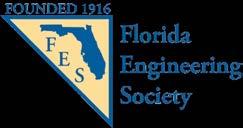
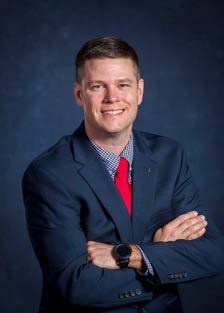
Engineering has always been seen as a career that contributes to the growth of the country through the application of technology, math and science – be it an aqueduct that carries water from a far-off land to a city center or a rocket that brings people to the moon.
As we march into the future, the field of engineering continues to flourish, offering dynamic opportunities and pathways for individuals seeking both personal and professional growth. This article explores the growth of engineering and key ideas about growth as an engineer.
The discipline of engineering started during the 18th and 19th centuries from a military skill associated with the technology of war. The discipline then spread to broader civilian applications such as bridge construction, industrial technology and transportation.
The first American school to offer instruction in engineering was the United States Military Academy at West Point in 1802 (“military engineering”), followed by the Rensselaer Polytechnic Institute in 1824 (“civil engineering”), the United States Naval Academy at Annapolis in 1845, Harvard in 1847 (later spun off as M.I.T.), Dartmouth in 1850, and Yale in 1852. As Technology advanced, we saw the creation of many other engineering disciplines such as mechanical, electrical, chemical, aerospace and computer engineering. Now we are seeing the growth of biomedical engineering, molecular engineering and other emerging fields. This diverse and growing history of engineering has always provided an opportunity for people with varied interests and skill sets, making it an exciting career to embark on and grow in.
During the 21st century, we have seen a technological revolution.
The creation of new technologies has created enormous opportunities and disruptions in the market. The fusion of engineering with cutting-edge technologies like artificial
intelligence, blockchain and quantum computing has given rise to novel career avenues.
Engineers are at the forefront of developing autonomous vehicles, revolutionizing healthcare through telemedicine and crafting sustainable energy solutions. These innovations have created countless new jobs, made other jobs easier and/or faster. It has also made some jobs obsolete.
One challenge we will need to face as we grow with technology is how we do it responsibly. This is why the Engineer’s Creed, a moral compass for our profession, starts with “As a Professional Engineer, I dedicate my professional knowledge to the advancement and betterment of public health, safety, and welfare” to protect the public.
As engineers we need to work with policy makers, doctors, lawyers, contractors and manufacturers to implement new technologies in responsible ways. Additionally, as we continue to integrate technology into society, we need to remain vigilant about the global market we are part of. We need to consider how bad actors could use beneficial technologies in immoral ways. This could take the form of cyber-attacks on our infrastructure, corruption of data, or the infiltration of supply chains in ways that could cause vulnerability in the future.
Because of these rapid innovations in the world today, new technologies emerge, regulations evolve and best practices shift. Consequently, a growth mindset and a commitment to lifelong learning are crucial for success.
Engineers need to continue to grow and stay current on new developments in their field. This can be done through research, certification, workshops and returning to school for advanced degrees.
To be successful today, engineers must be committed to personal development. It is important to learn and develop technical skills, but the true engineer will seek to develop their interpersonal skills as well.
The soft skills of engineering such as public speaking, managing people, quality communication and emotional intelligence are not a major focus of engineering education. They are a large part of the job as you grow in a company, and you must purposefully cultivate these skills. Engineers tend to be collaborative. No one can build a rocket or construct a bridge by themselves. It takes a team! And a diverse team is a better team. The growth of engineering careers goes hand-in-hand with diversity and collaboration. Engineering teams now comprise individuals from various cultural backgrounds, genders and experiences. This diversity helps with design but has to be intentionally developed.
Different people from various backgrounds bring diverse ideas to the table, and the best ideas can be brought to the surface. Learning from each other builds better teams and superior projects.

Entrepreneurship is no longer reserved for business graduates alone. Engineers with a vision can start their own companies and create groundbreaking products or services. The rise of startups in tech and engineering has created an environment where engineers can turn their ideas into reality. This entrepreneurial spirit, combined
with engineering expertise, can lead to exceptional career growth and financial success.
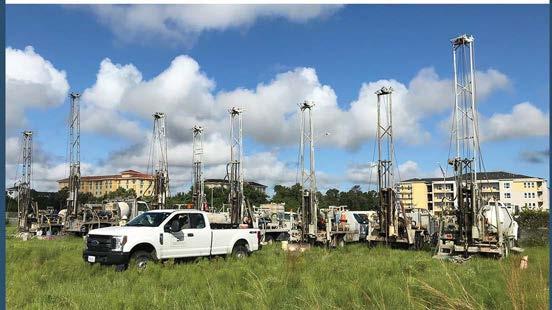
There will always be a place for the General Electric, Lockheed Martins, and AECOMs of the world. We must remember where these companies started: A person or two working away at a problem that people needed solved for a price they could afford.
Engineering is a great business. Today we have more work to be done than people who are willing to do it. If you are motivated and have initiative, there are great opportunities out there. I know many people who have taken the jump to start their own business, and one of their first clients is the large company that they used to work for. The growth and income potential in America is unlimited for the small business owner who wants to work.
If high risk-high reward is not your style, I still suggest bringing the entrepreneur spirit with you to work every day. Understand how your business makes money and how you can help improve that. This will help you to advance within your company in terms of your responsibility and respect. Engineering as a career is in a period of unprecedented growth in so many ways. Will you grow with the industry? Visit fleng.org and consider joining FES and be part of a community committed to promoting and defending Florida’s professional engineers, networking opportunities and continuing education to the development of leadership and personal skills.
 BY JOE VANHOOSE Managing Editor
BY JOE VANHOOSE Managing Editor
In 2019, the City of Port St. Lucie celebrated the long-awaited third crossing over the St. Lucie River in Port St. Lucie with the opening of the Crosstown Parkway Extension.

Forty years in the making, this project included careful planning to overcome legal challenges and weather events. The 1.5-mile corridor improvement project and 4,100-ft-long bridge combined pile supports with Florida I-beams and a cast-in-place deck.
The bridge traverses an environmentally sensitive area, which required minimization of wetland impacts and protection of the Savannas Preserve State Park. The new bridge provides a new hurricane evacuation route, relief to longtime traffic congestion in the growing city and a waterfront park the community can celebrate.
And it’s one of many projects that are helping Port St. Lucie handle its explosive growth over the past few decades.
Port St. Lucie is divided by the North Fork of the St. Lucie River. After experiencing exponential growth the last few decades, the city is densely populated on the west side of the river, with a hospital, medical offices, and shopping located on the east side.
Until the Crosstown Parkway bridge was complete, the city only had two roadway crossings of the river — both of which were seriously above capacity — that also served as the coastal city’s only two hurricane evacuation routes.
City planners saw a need for a third river crossing more than 40 years ago. When they first added the crossing to their comprehensive plan in 1980, fewer than 15,000 people lived inside the Port St. Lucie city limits. By 2000, the population had soared to nearly 90,000. Today, Port St. Lucie is the seventh most-populated city in the state and the fifth fastest growing city in the U.S with more than 231,000 residents.
“We knew we had to build this project,” said Port St. Lucie Project Manager Frank Knott. “‘No’ was an answer we couldn’t accept.”
Port St. Lucie voters approved a $165 million general obligation bond to support the construction of the Crosstown Parkway across the city and the river. The city undertook construction of supporting segments, including an interchange at I-95 and a bridge over Florida’s Turnpike starting back in 2007.

But by 2010, the project was again at an impasse. Port St. Lucie’s city manager at the time, Don Cooper, was able to work with the Florida Department of Environmental Protection (DEP) to develop a regulatory mitigation plan and proprietary mitigation plan.

“The proprietary mitigation plan was made up of some projects that DEP couldn’t fund but were on the books for years,” Knott said. “We agreed that we would do those projects, which had to be built before Crosstown opened.”
The PD&E process for the project took more than 10 years, leaving federal funding jeopardized and on the brink of expiration if the city of Port St. Lucie did not let for construction soon. To secure the funding, the city used design-build to expedite the process.
Because of the corridor’s route across sensitive wetlands in the Savannas Preserve State Park, the design-build team of RS&H and Archer Western Contractors sought to minimize the effects of an expected contentious environmental permitting process by using geotechnical information obtained from adjacent river channels.
“To minimize the environmental challenges, we designed the bridge with geotechnical information that had been obtained from the land side approaches, with intentions
to complete geotechnical investigations via a temporary trestle during construction,” said RS&H Project Manager Rachel Back, PE, CFM. “We obtained subsurface borings from the temporary construction trestle as part of the overall project permit, which eliminated the need for a separate taskrelated permit.”
Along with minimizing the project’s environmental footprint, the temporary trestle would also prove valuable in facilitating longer spans and improving overall construction quality. The trestle was installed linearly to reach the entire width of the bridge, and bores were taken as it progressed the length of the bridge.
The bridge still faced a year-long environmental permit challenge, but the project team made the most of the delay. More than 60 pile caps were precast while rights-of-way were acquired and the utilities relocated. The precast pile caps required multiple mock-ups to perfect the casting process and ensure a perfect fit between the piles and the caps.
“This was at-risk work that could only be done because of the design-build project delivery,” said Back. “Several tasks were able to happen concurrently during the permitting stage so that, once permits were in place, construction could quickly begin.”
The Crosstown Parkway corridor also includes a first of its kind in Florida: a superstreet intersection at Crosstown Parkway and Floresta Drive.
Superstreet intersections are a type of restricted crossing U-turn intersection – as defined by the Federal Highway Administration – designed for situations where the through traffic on the major road is much denser than the cross-street traffic.
“We knew we had to build this project... ‘No’ was an answer we couldn’t accept.
Traffic analysis showed that the traffic would fail based on the design of a traditional intersection — the projection for the year it was to open was already a failing design. But when the superstreet model was analyzed, the level of service for the opening year improved from Level E to Level B. Even in the design year 20 years in the future, traffic is projected to still be at Level C, Back said.
Travelers on the Crosstown Parkway treat the intersection the same as any traditional signalized intersection, able to travel through, turn left or turn right. Those on Floresta Drive, however, can only turn right at the intersection. They can then go through signalized, synchronized U-turns in order to travel through the intersection or to turn left.
The intersection eliminates a signal phase, resulting in significant time savings for motorists. Traffic analysis for Crosstown Parkway and Floresta Drive indicated the average delay time was eight times faster than with a fourleg intersection design.

Safety is also greatly improved by reducing the conflict points from 32 to 14, reducing the frequency and severity of crashes. Pedestrian safety is improved even more than vehicular safety, reducing conflict points from 24 to 8 while providing a large median refuge island.
With the project in the planning stages for 40 years, the city and project team worked diligently to make this longstanding Crosstown Parkway Extension project happen.
Everything was thought of meticulously; the design-build team created a durable structure with a lifecycle of about 75 years while including imaginative techniques that improve safety and mobility.
“Walter England
(the city’s longtime engineer) worked tirelessly to get the project going, and Patricia Roebling, his successor, kept it going,” Knott said. “It was truly a City project. Everyone was involved – the legal department, procurement, parks and recreation, our public works department. Everybody played a role.”
No one involved envisioned the project as simply a bridge that connects two segments of the city. The Crosstown Parkway also provides access to new waterfront areas, added a waterfront park, trailhead, canoe launch, art features, bike lanes, sidewalks, and makes the corridor a walkable, scenic area to be used and enjoyed by the residents.
Innovation in the design-build process allowed the incorporation of new sustainable features. Tiered walls, lighting, towers featuring commissioned Guy Harvey tile murals and sculptures, extensive landscaping, and scenic overlooks were included early into the design – aesthetics were never an afterthought.
It was truly a City project. Everyone was involved –the legal department, procurement, parks and recreation, our public works department. Everybody played a role.
Despite being interrupted twice by hurricanes, the project was completed two months early with no recordable safety incidents. With the project team’s innovations in design and construction, they brought the price $13 million under budget despite the added scope. An estimated 10,000 residents attended the grand opening in September 2019.

Since its completion, the project has been a praised achievement for the community and has won several industry awards.
The Design-Build Institute of America (DBIA) honored the Crosstown Parkway Extension with the National Award of Excellence in Transportation. Engineering News-Record recognized it as Best of the Best in the Highway/ Bridge category Nationally and for the Southeast Region. Roads & Bridges celebrated it as a Top 10 Bridge.
The project also won the Engineering Excellence Grand Award by ACEC Florida.
While the Crosstown Parkway Extension is still celebrated in the city, Port St. Lucie continues to work each day to implement and identify future projects to support growth and mobility.
In 2018, residents in the city approved a halfcent sales tax referendum that would provide funding to help improve the quality of life, public
safety, safer roads, bridges and sidewalks. City officials identified several projects that would be completed with the half-cent sales tax money.
One project identified was the Floresta Drive Improvement Corridor Project, a 4.1-mile, twolane roadway from Southbend to Prima Vista Boulevard used by residents who live along the corridor. Floresta Drive also provides access to three major roadways.
The project was originally conceived as a fourlane section but ultimately put on hold after the 2008 recession. Input was collected from residents starting in 2017 with multiple public meetings. The project was modified based on resident input to include a two-lane complete street roadway that would support projected traffic volumes and encourage safe and efficient traffic flow. Construction for the project started in 2020.
The city worked closely with FDOT on all activities along Port St. Lucie Boulevard. The project also includes a new roundabout on Floresta Drive at Thanksgiving Avenue and median openings at Portage Avenue, Essex Drive and Ablett Lane. Raised landscaped medians were added for better access management, and stormwater treatment ponds were added at Essex Drive with a sidewalk and workout equipment and at Port St. Lucie Boulevard with a fountain feature.
The Floresta Drive Phase 1 Project was one of nine projects awarded a grant by the South Florida Water Management District (SFWMD).
The grant was used to retrofit the Kingsway Waterway outfall, located within the project corridor, with baffle boxes to reduce nutrient discharges in runoff to the North Fork of the St. Lucie River.
Phase 1 of Floresta Drive is complete and has transformed this residential street.
Residents in Port St. Lucie can now enjoy a scenic roadway with sidewalks, pedestrian crossing safety enhancements, buffered bicycle lanes, lighting and landscaping features. Landscaping along with the other implemented safety treatments and traffic calming features are helping encourage traffic to slow down and helping motorists recognize this corridor as a neighborhood street.

The project enhanced safety and accessibility for pedestrians and bicycles as this phase 1 corridor connects to businesses, churches, schools and daycares. Phase 2 of the Floresta Drive Project is currently under construction.
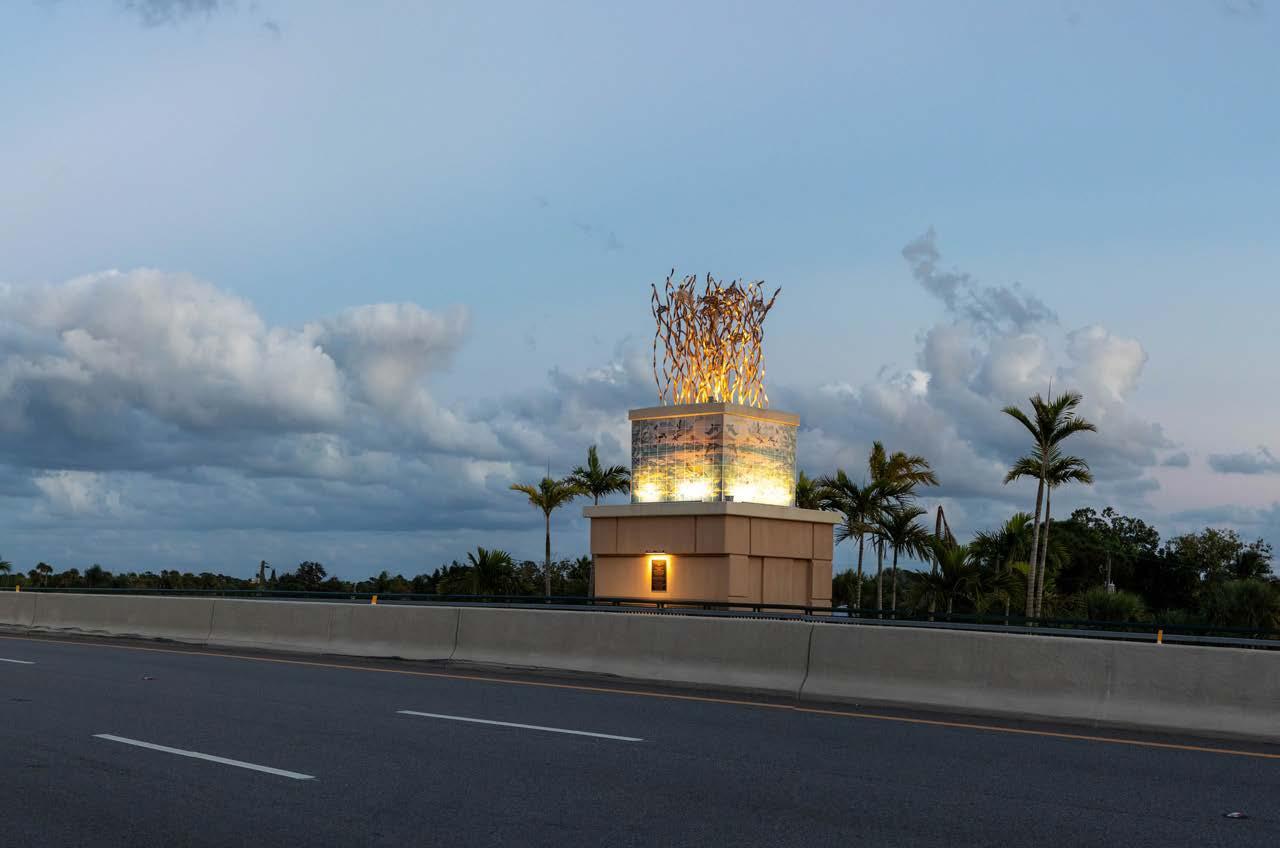
The Sunshine State, known for its vibrant cities, picturesque landscapes, and diverse architecture, has undergone a remarkable transformation over the past two decades. Florida’s rapid urbanization, population growth and increasing emphasis on infrastructure development have fueled a significant surge in the demand for structural engineers. Structural engineers are crucial in shaping the state’s evolving skyline and ensuring the safety and resilience of its built environment. Let’s delve into the factors contributing to this growth and examine how this trend is reshaping the profession.
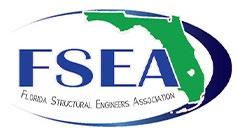
has grown significantly. From retrofitting existing buildings to integrating state-of-the-art materials and techniques into new constructions, structural engineers are essential in mitigating the potential impact of natural disasters on the state’s communities.
The population of Florida has seen a remarkable increase over the last 20 years. As people flock to the state’s urban centers for job opportunities, lifestyle benefits and a (mostly) favorable climate, the demand for housing, commercial spaces and infrastructure has skyrocketed.
This urban influx has led to a surge in construction activities, from high-rise residential buildings to office complexes and transportation hubs. Structural engineers play a pivotal role in ensuring that these structures are not only aesthetically appealing but also safe, functional and capable of withstanding the region’s unique challenges, such as hurricanes and floods.
We have witnessed rapid advancements in technology that have revolutionized the field of structural engineering. Computer-aided design (CAD) software, Building Information Modeling (BIM), and sophisticated simulation tools have streamlined the design process, enabling engineers to create accurate, efficient and costeffective structures.
These technologies not only enhance the accuracy of structural designs but also facilitate collaboration among multidisciplinary teams, from architects to contractors. As a result, the demand for structural engineers who are adept at utilizing these technologies has surged, driving the growth of the profession.
As we again witnessed at the end of August, Florida’s vulnerability to hurricanes and tropical storms has prompted a critical need for structurally resilient buildings and infrastructure. The state’s architectural landscape has evolved to incorporate hurricane-resistant designs, and structural engineers are at the forefront of this evolution. Since the turn of the century, the demand for engineers with expertise in designing hurricane-resistant structures
The increasing global focus on sustainable development has had a profound impact on Florida’s construction industry. As communities and organizations strive to reduce their carbon footprint, the demand for eco-friendly buildings and green infrastructure has risen significantly.
Structural engineers play a pivotal role in integrating sustainable features such as energy-efficient designs, renewable energy sources and green roofs into the built environment. Their expertise in optimizing designs for energy efficiency and environmental impact positions them as key players in the state’s sustainable development initiatives.
Florida’s burgeoning population has placed strain on its transportation systems, leading to the expansion and modernization of roads, bridges and public transit networks. The demand for structural engineers with expertise in infrastructure design and rehabilitation has grown in tandem with these initiatives.
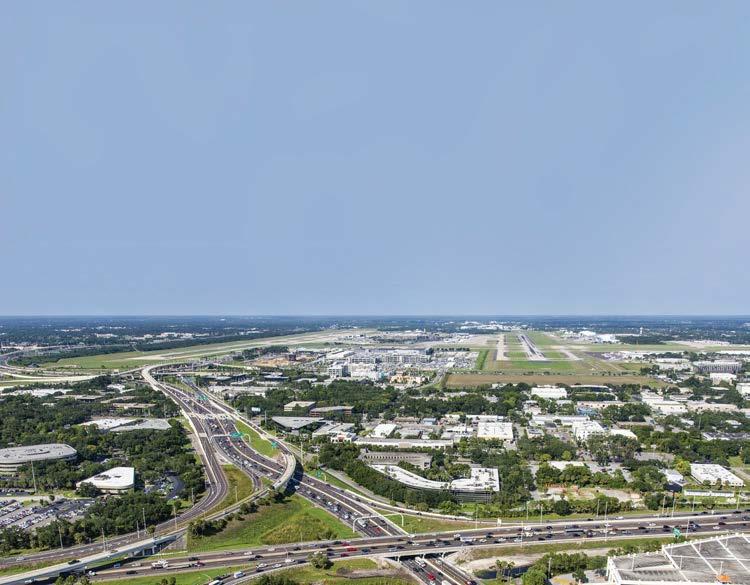
From ensuring the safety of bridges to optimizing transportation hubs, structural engineers are instrumental in creating infrastructure that meets the needs of a growing population while adhering to stringent safety standards.
Florida’s architectural landscape has been enriched by a multitude of unique projects that demand specialized engineering expertise. Iconic buildings, bridges, stadiums and cultural landmarks have become symbols of the state’s modern identity.
Structural engineers are instrumental in turning architectural visions into reality, often tackling complex challenges related to design, materials and safety. As architects push the boundaries of creativity, the demand for structural engineers capable of translating these designs into structurally sound realities has surged.
In response to the changing landscape of construction and the need for disaster preparedness, government regulations and building codes have become more stringent. Structural engineers play a critical role in ensuring that buildings and structures adhere to these codes, which are designed to safeguard the public and promote structural integrity. With evolving regulations, the demand for engineers who are well-versed in current codes and compliance has grown significantly.
In fact, the growth in the demand for structural engineers in Florida over the past 20 years is a reflection of the state’s evolving needs and priorities. All the while, structural engineers have been at the forefront of shaping the built environment.
As Florida continues to develop and adapt to changing demands, the role of structural engineers will remain pivotal in ensuring the safety, functionality and resilience of the state’s architectural and infrastructural achievements.

Delivering transportation projects, from concept to completion, throughout the Sunshine State.

Spurred by 2021’s global supply chain crisis and ongoing labor issues in California’s ports, as well as a rapidly growing state population and increased trade between the U.S. and Mexico, Florida’s 16 seaports posted record cargo movements in 2022.
Together, they handled 112.5 million tons of cargo, a 6-percent increase from 2021.
“There’s been unprecedented growth for one simple thing you’ll appreciate: population growth,” said Carlos Buqueras, chairman of the Florida Ports Council and president and CEO of SeaPort Manatee. “As they say in the shipping business, or any business, a rising sea floats all ships. We all went up. The Florida ports have been very aggressive in growing and being able to serve the population that depends on us to provide most of the supplies that they use in a day.”
Increased trade with Mexico has played a significant role in growth for Florida’s ports. According to the U.S. Department of Commerce Bureau of Industry and Security, U.S. exports to Mexico increased 30.7 percent from 2020 to 2021, and imports from Mexico increased by 18.3 percent. And as more cargo travels between the two countries, there has been greater demand for Florida’s ports.
“It’s neat to see the types of commodities that are traveling both directions,” said Alex King, chair of the Florida Seaport Transportation and Economic Development Council and executive director of Port Panama City. “That’s something that not only Panama City, but other Gulf ports are really getting involved in considering the amount of trade that currently goes by land over the border.”
And though California’s ports offer an attractive route for trade with Asia, they have become overcrowded and faced an onslaught of labor issues due to ongoing contract negotiations, an issue that has not impacted Florida’s ports.
“You head to California ports, and that was the quickest way for shipping line carriers to deliver goods
to the United States (from Asia),” said Michael Rubin, president and CEO of the Florida Ports Council. “And it’s gotten crowded. [The Ports of Los Angeles and Long Beach] are perhaps the most inefficient ports in the world.”
But Florida’s Gulf ports may be impacted by a different issue – the trade waters they serve are home to the endangered Rice’s whale, and further protections could drastically reshape Florida’s shipping industry.
Florida’s four most active ports in the Gulf of Mexico reported record-breaking numbers for both cargo and revenue in 2022. Port Panama City set an all-time record of 2.03 million tons of cargo, a 4-percent yearover-year growth. Additionally, Port Panama City saw a 9-percent increase in revenue over fiscal year 2021, with a record $19.04 million in revenue for fiscal year 2022. Also in the Panhandle, the Port of Pensacola handled 425,577 tons of cargo in fiscal year 2022, a 55-percent year-over-year increase.
The story was similar for SeaPort Manatee, which saw a 35-percent increase in container cargo in fiscal year 2022 and a record 177,108 Twenty-foot Equivalent Units (TEU), more than doubling its TEU total for fiscal year 2020.
As they say in the shipping business, or any business, a rising sea floats all ships. We all went up.
Port Tampa Bay, Florida’s largest seaport by tonnage and acreage, is also one of the nation’s fastest growing seaports. The port is set to receive $12.6 million in Rebuilding American Infrastructure with Sustainability and Equity (RAISE) grant funding from the U.S. Department of Transportation to expand a berth at Port Redwing, a satellite facility. Overall, Port Tampa Bay is planning the completion of $78.3 million in improvement projects in 2023.
More important than the amount of cargo handled by the ports, however, is what that cargo contains. SeaPort Manatee and Port Tampa Bay serve as two of Florida’s four fuel ports. The fuel ports supply 90 percent of Florida’s fuel, and Rubin estimated that 40 to 45 percent of that fuel is transported through Port Tampa Bay.
“When I say that ports touch everybody, that includes fuel, so the ports are critical in bringing by sea the fuel that powers the cars that everybody uses,” Buqueras said.

Other goods that pass through the ports include food, medical supplies, construction materials and paper pulp to create products like toilet paper. Buqueras shared that SeaPort Manatee is responsible for bringing 1.2 billion bananas to Florida each year and is the second largest importer of orange juice in the United States.

The ports are critical in bringing by sea the fuel that powers the cars that everybody uses

Jaxport in Jacksonville, Florida’s largest container port by volume, is one of the nation’s top vehicle-handling ports –553,029 automobiles passed through the port last year – with its other chief imports including medical products, machinery and industrial chemicals.

Florida’s ports play a significant role in the supply chain, but they also serve the state’s tourism industry. Port Canaveral, PortMiami and Port Everglades are the world’s top three cruise homeports, handling approximately 60 percent of all U.S. passenger traffic.
The cruise industry has not fully rebounded in the wake of the COVID-19 pandemic, with Florida’s cruise industry recording 10.77 million passengers in 2022, a 41-percent decrease from 2019. However, the Florida Ports Council projects that the cruise industry will exceed its 2019 numbers in 2023.
PortMiami, the world’s largest cruise terminal, anticipates a 20-percent increase in the number of cruise ship calls in the next year. Port Canaveral, also one of Florida’s four fuel ports, is slated to add a $175 million cruise terminal in late 2026 to accommodate new ships. And Port Everglades, South Florida’s main seaport for receiving energy products, is set for $25 million in cruise terminal improvements in fiscal year 2023.
Despite the growth in cargo handled by Florida’s ports and a projected total of $2.3 billion dollars in priority improvement projects planned for 10 of the State’s ports this year, four of Florida’s six Gulf Coast ports could be drastically impacted as the result of petitioned actions that would significantly decrease vessel activity in the Gulf of Mexico.
Those petitioned actions, submitted in 2021 to the National Oceanic and Atmospheric Association (NOAA) by the Natural Resources Defense Council, Healthy Gulf, Center for Biological Diversity, Defenders of Wildlife, Earthjustice and New England Aquarium seek to establish a vessel slowdown zone in the region of the Gulf of Mexico from Pensacola to just south of Tampa within waters 100 to 400 meters deep. Proposed regulations within the vessel slowdown zone include a 10-knot speed limit for vessels greater than 65 feet in length and eliminating nighttime vessel traffic altogether.
The petition was submitted by the environmental groups for the protection of the Rice’s whale, a newly discovered species of whale that was officially recognized by the Society of Marine Mammalogy and Taxonomy in 2021. Prior to this classification, Rice’s whales were believed to be a
subspecies of the Bryde’s whale, which were classified as endangered species in 2019.
Grant Baysinger, a contractor in the Marine Mammal Branch of the Protected Resources Division in NOAA’s Southeast Regional Office, said there are only an estimated 51 Rice’s whales remaining.
“They’re found only in the Gulf of Mexico, and they’re in an area that’s heavily impacted by humans,” Baysinger said. “As a large whale, they’re important to the ecosystem. The contributions they make of just moving around and spreading nutrients around the Gulf of Mexico is important to habitats and to other species out there. And then, just generally, this is a whale that’s found in American waters, so it seems like it should be something of a priority that we do something for this whale.”
In proposing the vessel slowdown zone, the two major concerns cited by petitioners were noise pollution and vessel collisions.
Because whales communicate through whale calls, noise pollution makes it difficult for the species to locate mates and food sources. Baysinger likened this to sitting next to a friend at a sporting event and being forced to speak louder and louder to hold a conversation. And depending on the severity of noise pollution and their proximity to loud noises, whales can suffer either temporary or permanent damage to their hearing, making critical communication impossible.
The Gulf of Mexico is bowl-shaped, Baysinger explained, so the sounds created by industrial activity in the Gulf bounce around before exiting. This is of greater concern
in the Western Gulf, where the seismic testing and surveys generated by the oil and gas industry create more noise than in the Eastern Gulf where the industry is not operating.
Though one Rice’s whale was discovered off the coast of Corpus Christi, Texas in 2017, and passive acoustic monitoring has recorded Rice’s whale calls off the coasts of Texas and Louisiana, the species is predominantly found in the Eastern Gulf’s quieter waters.
Still, Baysinger advised that any human-generated noise, including vessel traffic, can be harmful to whales.
“It’s a cumulative kind of effect,” Baysinger said. “Any sound is adding to the level of sound that is out there in the Gulf of Mexico. So while seismic surveys are probably the loudest thing going on in the Gulf of Mexico, any incremental increases in sound are noticeable.”

Vessel collisions are the second threat to Rice’s whales cited in the petition, and the proposed solution is a stoppage of nighttime vessel traffic. Rice’s whales feed during the day and spend the night within 50 feet of the water’s surface.
“They’re spending their nights at the surface of the water, and one of the challenges of that is that they’re difficult to see to begin with, but even more so at night when visibility is lower,” Baysinger said.
NOAA opened the petition for the vessel slowdown zone for a 90-day public comment period that ended July 6, and the organization received more than 75,000 comments in response.
“We’re going through those,” Baysinger said. “It’s going to take time – we weren’t anticipating that many public comments. We have to sort them out and kind of understand what folks said about the whale in the comments and the impacts to industry and those kinds of things.”
Baysinger said the timeline for NOAA’s response to the proposed action is uncertain, with other projects related to the Rice’s whale receiving higher priority.
“There’s no set standard or timeline that we’re working on at this time,” Baysinger said.
Pointing to the critical role that Florida’s ports play in transporting essential goods to Florida consumers, the Florida Ports Council has issued numerous resources outlining what the organization characterizes as the
They’re found only in the Gulf of Mexico, and they’re in an area that’s heavily impacted by humans... As a large whale, they’re important to the ecosystem.
“clear and present danger to Florida’s economy” created by NOAA’s petitioned actions on vessel activity. SeaPort Manatee, Port Tampa Bay, Port Panama City and Port of Pensacola all fall within the proposed vessel slowdown zone.

”There’s probably nothing more anti-commerce than what they’re trying to do here,” Rubin said “It’s just astounding to me. I’ve read more about whales than I’ve wanted to in my entire life, and I really am astounded by the limited data they have and what they’ve done based on that limited data.”

More than 6,400 ships called on Port Tampa Bay in fiscal year 2022 for an average of 17 or more ships per day. These vessels all relied on nighttime travel for part of their journey to the port, and the journeys of vessels traveling to the other three impacted ports reflect a similar reliance on nighttime travel.

Vessels carrying fuel from Texas and Louisiana to Central Florida would have to transit the vessel slowdown zone twice, adding two extra days to their travel. And if a hurricane were to hit Florida, the inability to efficiently move fuel to the State could have catastrophic
consequences for Floridians attempting to evacuate, Rubin added.
“Anybody that’s been through a hurricane in Florida realizes how important fuel can be at any time,” Rubin said. “We’re really concerned that somebody at NOAA hasn’t been paying attention to the logistics of trade movement, so we’re going to make sure that they understand what they’re doing.”
Buqueras points out that, while Florida’s ports would be harmed by the vessel slowdown zone, consumers would bear much of the burden of the proposed rules. With lower vessel speeds and the elimination of nighttime traffic, fewer vessels would be able to traverse the Gulf of Mexico, leading to less cargo handled through the ports and fewer goods for
Port Tampa Bayconsumers to buy. Ultimately, a decreased supply of goods could translate to higher prices for consumers who have already experienced the sting of inflation in recent years.
The Florida Ports Council has actively engaged the state’s congressional delegation on the potential impacts of the vessel slowdown zone, and their advocacy appears to have paid off, Rubin said.
“The good news is Congress is pretty bipartisan on this issue, which is very unusual these days,” Rubin said. “The fact that you can get Congress to agree to anything just shows you that people are concerned.”
On Aug. 18, U.S. Reps. Clay Higgins (R-LA) and Neal Dunn (R-FL) introduced the Gulf of Mexico Commerce Act to prevent NOAA from rulemaking that would establish the vessel slowdown zone, as well as requiring NOAA to consult government agencies and impacted stakeholders regarding the development of Rice’s whale protection policies. The bill would also require the Department of Commerce to study and report on the impact that the vessel slowdown zone would have on the supply chain.
The petitioned action for the vessel slowdown zone is not the only issue causing concern for Florida’s ports. A proposed rule by NOAA Fisheries to establish a
critical habitat designation for the Rice’s whale for an area encompassing more than 28,000 square miles of continental shelf and slope associated waters within the Gulf of Mexico is open for public comment through Sept. 22. Notably, the proposed rule encompasses the entire Gulf of Mexico, while the petitioned action only impacts the Eastern Gulf.
Baysinger referred to this proposed rule as “the highest priority project right now.”
On its face, a critical habitat designation does not entail restrictions for entities like ports, and according to NOAA Fisheries, the designation of a critical habitat must take into consideration “economic, national security and other relevant impacts, including public input.” However, Rubin expressed concerns that establishing a critical habitat for Rice’s whales would set the stage for more rules and restrictions down the road.

Baysinger maintained that the critical habitat status would “not come with modifications to the current or existing operations [of the ports].”
“So it’s just a designation of a habitat, but OK, you’re in a designated habitat, what’s next?” Rubin said. “You’re kind of waiting for the next shoe to drop.”


Few issues have dominated a news cycle the way that artificial intelligence (AI) has in 2023. The watershed moment was the release of ChatGPT, a transformative word processing tool that uses AI to quickly, efficiently and comprehensively answer questions posed to it.
Almost immediately, people and businesses found myriad ways to use ChatGPT’s functionality to save time while developing written content and performing other tasks. In this article, we look at how some A/E/C firms are using AI, and what you should do – and shouldn’t do – to make it work for your firm.
Marketing and business development are the areas most expected to benefit from the use of AI. While many firms are still in the investigation and discussion phase of figuring out how AI can benefit their marketing/BD efforts, some firms are putting it into practice in the following ways.

A/E/C firms are generating content for LinkedIn and other social media outlets using ChatGPT. The process typically involves asking the chat bot a question and then reviewing and editing the content it generates. Firms can then post ChatGPT’s output as a thought leadership piece on LinkedIn, a blog or some other form of social media. Thus, a process that might take an hour or two without AI can happen in minutes.
For example, I asked ChatGPT to answer this question:
“What is the outlook for architecture firms that work in the healthcare market?” ChatGPT answered the question with an introductory line, “Architecture firms that specialize in healthcare can have a positive outlook due to several factors.” It then delivered six paragraphs that included references to patient-centered care and sustainable design.
The content was vanilla, suggesting that a more targeted or provocative question would produce a better result, and that editing the content to add back some “humanity” is imperative. When using ChatGPT, keep in mind that you can follow up your original question or statement to produce increasingly more detailed results.
A few firms are using AI to help inform their go/no-go process. Akshay Mahajan, executive vice president of AEC for Unanet, explains that AI can provide valuable, in-depth and objective insight into whether a project pursuit is likely to bear fruit.
“In the go/no-go process, people look at the data available to them,” said Mahajan. “Who is the client? Are they a repeat client? What’s the dollar value? Where is the project?
“Then everybody is supposed to use their own data and imagination: What does it mean to you, what does the current pipeline look like, are we already overrun in this sector, and what is our experience with this client or type of project?”
Firms can put all this objective and subjective information into a form to produce a number or percentage that indicates whether the firm should go after a project or not. Generative AI offers firms the ability to bring far more relevant data into the process and deliver a stronger
direction, not only about whether to pursue a project, but also how some changes might improve the firm’s chances of a win.
“You can take the past and current data, add the pursuit data, and input it into a machine-learning algorithm and get an output as simple as your percentage chance of winning,” Mahajan said. “But then you could get a second output that tells you what your margins are going to be if you win it, based on historical data. This is very difficult to calculate with the data we typically have.”
A firm can also determine if winning a project helps move its strategic plan forward, Mahajan added.
“So even if your chances of winning are lower than you typically like, you may want to pursue it if it serves the purpose of your strategic plan,” he said. “AI can also tell you how you can increase your chances of winning; for example, maybe it can give you three more contacts within the target company for you to meet or some insight into pricing.”
The better data available to the AI program, the more helpful the results. Firms with a robust, detailed CRM system that has a substantial amount of information about past pursuits will get better insight from this type of process.
Firms are using AI to generate boilerplates for competitive proposals. The caution here is to ensure that it doesn’t become obvious to the recipient that it is boilerplate generated by a machine. Done correctly, however, content created by AI and edited by a human will more efficiently populate the more mundane parts of a proposal.
Firms are using AI to prime the pump for ideas to use in content marketing programs, website content, client outreach and even project design. Stumped on what to say? Ask AI, and then filter and refine the results to say what you want to say.

Mahajan says that project managers and seller-doers can benefit from using AI to help them prioritize their day.
“One of the biggest challenges that seller-doers have is context switching every 30 minutes,” he said. “Sometimes they struggle with understanding if they’re working on what they should be at the time. AI and machine learning can help by telling them what will happen if they don’t act.”
Mike Boisvert, senior consultant and data acquisition manager for 850-person environmental consulting firm Verdantas, sees the potential for AI to quickly determine
the best approach to enhance job site performance. “Let’s say we’re designing earthworks for a shipping facility, and we have a set amount of material,” said Boisvert. “AI may help minimize cuts and fills, identify where material should be stored for best functionality or improve the flow of truck traffic. Clients aren’t paying consultants for options or time; they’re paying you to save them money in design. So AI might provide 15 options to decide from instead of 2 or 3.”
AI can usually spot trends and patterns, summarize data and produce content faster than humans can. This can result in more comprehensive, detailed deliverables rich with relevant information that would be cost prohibitive for a human to do without the help of AI.
The lightning-fast emergence of AI has made it a bit of a free-for-all, especially as ChatGPT has emerged as a free and ubiquitous AI tool. Employees may be using this chat bot program or other forms of AI without the knowledge or approval of company leaders and IT managers. This is one reason that Verdantas has put a temporary hold on all AI use for deliverables.
“We’re establishing some guidelines within the company about the use of ChatGPT and other AI language systems,” Boisvert said. “The current guideline is that no deliverables will be done with AI systems until we establish a vetting process. We want to create a task force to get a better understanding of what the system does before any published documents go out.”
“We’re taking the stance to not push this as a deliverable mechanism because we have no way of proving where this information came from,” he added. “Are there risks with submitting documents that might have proprietary or copyright information behind them? Where did the information truly come from? What facts are there? It’s pulling all the information from various sources, so how do you properly source and document? It’s a concern.” This doesn’t mean that Boisvert is down on the idea of AI contributing in the near future.
“We want to use the technology,” he said. “We want to engage Verdantas’ employees to innovate and keep moving forward because we know that if we’re not innovating and creating uses for AI, we’re going to be behind.”
What is your take on using AI in your firm? Are you already well into the process or still contemplating how it can work for you? I’d love to hear your thoughts on how AI may change the future of your firm and the A/E/C industry as a whole.
Please write to me at rich@friedmanpartners.com or call me at (508) 276-1101.
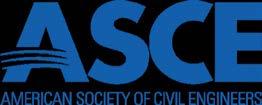 Tonya Mellen, PE PRESIDENT ASCE FLA EAST CENTRAL BRANCH Founder, Mellen Consulting
Tonya Mellen, PE PRESIDENT ASCE FLA EAST CENTRAL BRANCH Founder, Mellen Consulting

Future World Vision is an initiative created by ASCE that looks 50 years ahead to anticipate, reimagine and prepare for changes in the built environment. It was developed to allow participants to be free from the constraints of the way we have and are doing things, to how we might or could do them in the future.
The program is not meant to predict the future. Instead, Future World Vision visualizes several scenarios where emerging technologies and innovative designs can be analyzed, updated, changed and reset.
One such scenario, Mega City 2070, is a 3D digital model with an immersive story. You can explore the Mega City at street level as a visitor or delve into any of several adaptive corridors that let you see detail. You also have access to the research that informed the model and can comment as well as read comments left by others. The program is available for downloading on any pc or laptop for free.
Another scenario, The Floating City, is a 4D digital model available on Meta Quest 2 or Oculus headsets. The ASCE Future World Vision also includes Rural City, Frozen City and Off World City, which are at various stages of development.
One very exciting initiative for the general public is the Imax movie, Cities of the Future: Reimagining our World. In October, the movie will premiere in science centers and planetariums all over the country. You can view the trailer at www.futureworldvision.org.
Civil Engineers will be the leaders in solving the issues of the future, and we need to train and develop the next generation of engineers with this in mind. The Mega City 2070 project can help us with this daunting task by highlighting how civil engineering involves innovation and collaboration.
Projects include civil engineers, architects, planners and other professionals, requiring a multidisciplinary approach just like with our everyday work.
The program is also focused on sustainable infrastructure solutions, highlighting the importance of minimizing the impact of development on the environment. It highlights the need for innovative solutions to address the challenges faced by urban infrastructure.
We can use this tool to emphasize that civil engineering is a constantly evolving field, and we have the opportunity to be at the forefront of cutting-edge research and development. The Mega City 2070 project presents a bold vision of the future, one in which civil engineers have the potential to make a significant impact on the world.
Of all the aspects of Future World Vision, inspiring the next generation of civil engineers is the most important. ASCE has developed a curriculum for all ages and degrees of participation to complement the Mega City 2070 program and the Floating City 4D experience. Students from elementary school to college can be exposed to civil engineering in an exciting and informative platform not seen before.
Elementary teachers can utilize the ASCE Mega City 2070 program and available teaching aids to introduce students to the role civil engineers have in shaping the future of the world they live in as it will grow and change throughout their lifetime. The interactive nature of the program is a wonderful tool to inspire creativity and show young students all the hidden systems that lie beneath the ground.
STEM teachers in middle and high school can use the program to challenge students to think about how our cities are growing and how growth could be smarter, more inclusive, and environmentally sound. There are six elements of the program: Alternative Energy, Autonomous Vehicles, Climate Change, Smart Cities, High Tech Construction/Advanced Materials, and Policy and Funding. Each of these is a subject for research and discussion as they apply to each of the Mega City 2070 adaptive corridors.
ASCE has developed teaching aides, lesson plans and other curriculum available for downloading and Branches throughout the state have speakers ready to present in classrooms, along with exciting field trip opportunities.
Once a student has decided to pursue civil engineering, Future World Vision – and particularly the Mega City 2070 – serves a different purpose. Higher education institutions are ideally positioned to advance multidisciplinary thought leadership, creating a

common collaborative platform for engineering professionals and new specialties to respond to new challenges and technologies. Future World Vision can help inspire students to push to new heights in ingenuity, future planning and innovation.
ASCE has been working with civil engineering programs at universities throughout the country developing accredited curricula for full semester classes and postgraduate research projects. Not only will students benefit, but their work will enhance the Mega City 2070 program with expanded research and commentary. Future World Vision is an initiative created by ASCE initiative that brings together civil engineers’ best ideas to imagine what the future might look like beyond what we might have experienced in the past. Information on ASCE’s Future World Vision and all of its aspects can be found at www.futureworldvision.org.
If you are interested in hosting a presentation at your organization or company, contact the ASCE Florida Section at judy@fla-asce.org.
The Southwest Florida Water Management District (SWFWMD), one of five districts in the state, has long focused on educating the end user about springs, aquifers and clean water. In Sarasota, that looks like targeted social media campaigns, flyers in parks and at kayak rental stands, and even educational coasters used at many seaside restaurants. For the millions of tourists who come to Florida every year to enjoy its water bodies, SWFWMD has found a receptive audience.

“You can see the water here – you can touch it,” SWFWMD Executive Brian Armstrong said. “It’s easier to explain aquifer levels and flows and springs and their importance when you can look out and see what you want to protect.”
BY JOE VANHOOSE Managing Editorwater supply, Armstrong is confident that agencies and districts like his across Florida are making the necessary investments now to solve water crises before they could happen.
“I am not really concerned because I know the water supply authorities are out there planning not just 20 years but 40 to 60 years ahead,” Armstrong said. For instance, in his district, the Peace River Manasota Regional Water Supply Authority is constructing its third off-stream reservoir at the Peace River Treatment Facility in DeSoto County. The 9.3-billion-gallon reservoir will capture and store excess flows from the Peace River during the rainy season, which will increase reliability of the region’s water supply.
Tampa Bay Water is building the South Hillsborough pipeline to deliver an estimated 65 million gallons per day of alternative water supplies to the growing Boyette, Wimauma and Balm areas. The pipeline will start at the Tampa Bay Regional Surface Water Treatment Plant in Brandon and connect to Hillsborough County’s Lithia Water Treatment Plant. As far as finding new water sources, Polk County is going deeper.
Over the past decade, Polk County has become the fastest-growing county in the state. Its population ballooned from around 600,000 in 2010 to nearly 800,000 residents by the end of 2022.
Along with that growth have come growing concerns about where the water will come from to fulfill the heightened demand. To ensure capacity, the Polk Regional Water Cooperative began drilling new super wells east of Lake Wales and in Lakeland earlier this year that will penetrate two times deeper and tap into the Lower Floridan Aquifer.
Protection and production are top of mind for water resources officials around the state as record numbers of residents and visitors continue to flock to Florida. With the growth and development come old threats to Florida’s springs, bays and waterways, as well as new ideas on how to ensure the state has clean, plentiful water for generations to come.
A Melbourne native, Armstrong started as a field tech with the SWFWMD in 1997. When it comes to
The Lower Floridan Aquifer is much different than the upper aquifer used by most of Florida, which produces water that is close to drinkable as-is. The lower aquifer is much more brackish, requiring treatment via reverse osmosis. Still, once the wellfields are operational in the coming years, they will deliver up to a combined 22 million gallons per day of high-quality drinking water to the member governments.
You can see the water here –you can touch it. It’s easier to explain ... when you can look out and see what you want to protect.
These projects and others like it will take several years and hundreds of millions of dollars – even billions – to develop, which is why the water management districts are looking so far into the future, Armstrong said.


“When you get a great idea for an alternative water supply, it takes about 10 years before that water is going through someone’s tap,” he said. “So we must look well into the horizon. When you’re planning, if you need 100 million gallons per day, you plan for 300.”
David Tomasko spent 11 years with SWFWMD as a senior scientist and environmental manager before working with Atkins and Environmental Science Associates for a decade. He returned to Southwest Florida to become Director of the Sarasota Bay Estuary Program (SBEP) in November 2020.
He arrived with a five-year plan for making an impact. "If we can’t do it in five years, I am out because I don’t think we have more than five years,” he said.
SBEP’s Health of the Bay Report measures more than just water quality, instead looking at the health of the entire ecosystem. Volunteers visited 55 sites and drew over 500 data points, measuring nitrogen concentration along with dissolved organic nitrogen, algae and macroalgae. Paired with seagrass mapping from the SWFWMD, the report card compares each segment of Sarasota Bay against itself from years past.
“It becomes clear that, from 2006 to 2012, this was a healthier bay,” Tomasko said. “We’re talking lower nitrogen, less algae, clearer water, a 28% increase in seagrass [the peak for seagrass was in 2016].”
Several projects are lined up with a goal to return Sarasota Bay’s water quality to those 2006-2012 numbers, Tomasko said. Advanced water treatment, removing septic tanks from the watershed, and removing present and future spills will all help make a path to a better Bay.
It’s happened before. Tampa Bay experienced a 70% increase in seagrass coverage between 1999 and 2016. The biggest asset to its recovery was the City of Tampa’s wastewater treatment plant upgrade. Tampa Bay Water’s Regional Surface Water Treatment Plant has operated successfully since 2002, providing up to 90 million gallons per day of high-quality drinking water to the region and a maximum of 120 million gallons per day.
“But if you look at a big reason why they did it, it wasn't all about seagrass and water clarity, it’s the focus on macroalgae that had gone up around wealthier neighborhoods in South Tampa," Tomasko said.
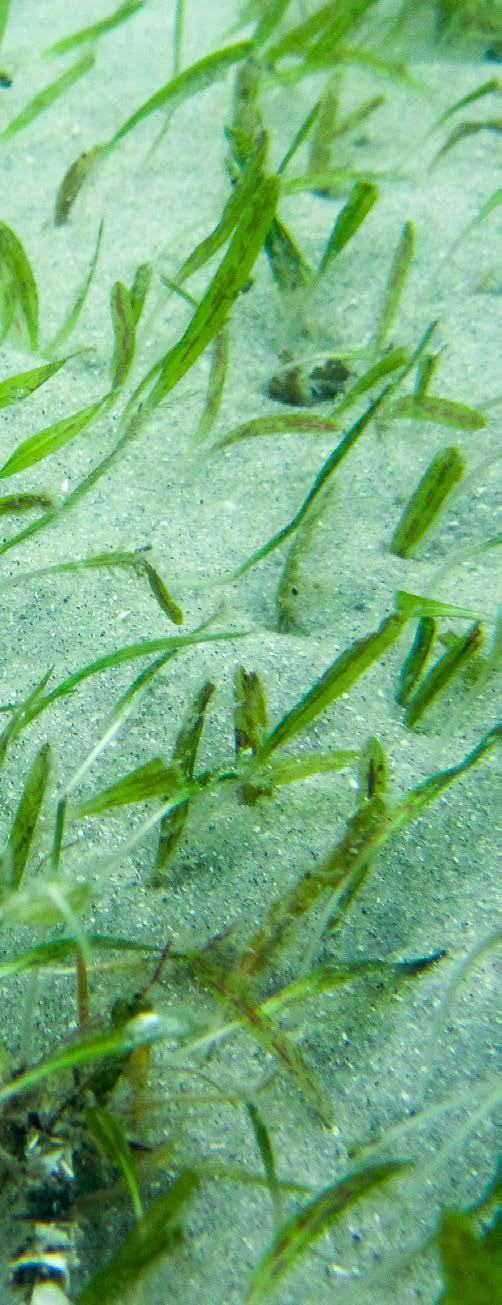
“Waterfront property owners are the first ones to have their property values impacted by bad water. They have the most to lose, so they have the most reason to push to do more than what we’re doing.”
Another big reason is to protect Florida’s tourism industry, which depends greatly on the state’s environmental assets.
“Our tourist industry depends on a healthy environment when it comes to the outdoors,” Armstrong said. “You have birdwatchers, kayakers, fishermen, all these activities that highlight our water resources. That’s why it is imperative to maintain their health.”
As far as the health of the Sarasota Bay watershed, 2018 was the worst year on record for wastewater overflows, as significantly more rain than usual primed the bay full of stormwater runoff.
“The water gets warm and we had the worst year for overflows and we had the worst red tide,”
Tomasko said. “At the same time, you had the manatee dieoff in Indian River Lagoon – we’ve lost 20-30 percent of the statewide manatee population in the last three years.”
Seagrass loss, evident from Indian River Lagoon to Biscayne Bay to Sarasota, Tampa and Lemon Bays, is the biggest culprit, Tomasko said. Combined, Florida’s waterways have lost more than 150 square miles of seagrass habitat.
“Manatees are dying because they’re starving, and they’re starving because there’s no seagrass, and there’s no seagrass because the water quality has gotten so bad in Indian River Lagoon and other areas,” he said. The loss of seagrass could have been because of a perfect storm of nutrient loads reaching a tipping point, red tide, algae, big storms and more rainfall over the last 10 years than previous 10 years, Armstrong said. There is no silver bullet to recovery.
“That keeps me a little worried,” Armstrong said. “I don’t have a doubt that we have some very intelligent people working on it from the (water management) districts and estuary programs. Everyone loves the Gulf and the Bays, and we’re all in it together to take care of them, even the private sector.”
Likewise, Tomasko remains optimistic about a turnaround in Florida’s seagrass recovery, as well as its focus on maintaining and restoring its water resources.
“I think I am optimistic because what’s the alternative?” Tomasko said, but he has more reason to believe than just shutting out the worst-case scenario. Development in his district is occurring farther away from the coast, and new development also has stronger rules and regulations to follow now than ever before.
Sarasota County is already moving forward with an expansion of its Bee Ridge Water Reclamation Facility, converting it to an Advanced Wastewater Treatment (AWT) facility. The project broke ground last year. The converted AWT will remove significant amounts of nitrogen and phosphorus in the effluent, provide higher quality reclaimed water for irrigation that conserves potable drinking water and ultimately help recharge the Florida aquifer.
To hold the line on harmful nutrients and restore waterways across Florida, Tomasko prescribes two key tactics.
“First, we need to minimize the increase in nutrients from new development,” he said. “But we have to also retrofit the older neighborhoods.
“When you come to Sarasota or Tampa around the older neighborhoods, there aren’t stormwater ponds, you have curbs and gutters – rain comes off the roof, goes down the street, through the drain and right out to the bay. So old development needs to be brought to a better level of treatment.”
Evidence of prioritizing Florida’s natural water resources amidst the state’s population growth is popping up in other key regions, too.
In February, the U.S. Army Corps of Engineers (USACE) and the South Florida Water Management District (SFWMD) broke ground on the reservoir component of the Everglades Agricultural Area (EAA) Reservoir Project.
USACE is constructing the 10,500-acre reservoir that can store up to 240,000 acre-feet in static water storage. In conjunction with other Central Everglades Planning Project (CEPP) features, this project will deliver an annual average of 360,000 acre-feet of clean water south to the Everglades. Meanwhile, SFWMD will finish construction on the adjoining 6,500-acre constructed wetland stormwater treatment area this year. The wetland will use three separate treatment cells of aquatic vegetation to remove nutrient pollution and clean water before it flows south into the Everglades.
“Many consider this project to be the 'crown jewel' of the Comprehensive Everglades Restoration Plan,” said Col. James Booth, commander of the U.S. Army Corps of Engineers Jacksonville District, at the reservoir groundbreaking. “The (EAA) Reservoir and Stormwater Treatment Area phase of the Central Everglades Planning Project is the keystone that deliberately reconnects Lake Okeechobee to the Everglades. Today’s success is due to the collaboration of federal, tribal, state and local partners.”
Florida Gov. Ron DeSantis has made water in general and Everglades restoration in particular one of the priorities of his administration. During his first term, SFWMD moved more than 50 Everglades projects forward. In January, DeSantis signed Executive Order 23-06 (Achieving Even
Manatees are dying because they’re starving, and they’re starving because there’s no seagrass, and there’s no seagrass because the water quality has gotten so bad.
More Now for Florida’s Environment), with a proposed $3.5 billion investment over four years for Everglades restoration and protection of the state’s water resources, surpassing the historic investments of the past four years and making it the highest level of funding in Florida’s history.
The USACE and SFWMD are 50/50 partners in implementing the world's most ambitious ecosystem restoration effort: the Comprehensive Everglades Restoration Plan (CERP). The EAA Reservoir Project is a key component of CEPP, a suite of projects within CERP to restore the Everglades and send more water south.
Another key CERP project spans both the South and St. Johns Water Management Districts. The Indian River Lagoon, home to more than 3,000 species of plants and animals, is considered the most biologically diverse estuarine system in the continental United States. It spans 156 miles from Ponce de Leon Inlet in Volusia County to the southern boundary of Martin County, the lagoon supporting commercial and recreational fisheries and acts as a $7.6 billion economic engine for the region.
But the waterbody has been plagued by harmful algal blooms resulting from decades of human impacts, specifically from nutrients from stormwater runoff, drainage canals and other sources.
In Martin County, the C-44 Reservoir and Stormwater Treatment Area under construction is the first component of the multi-billion dollar Indian River Lagoon-South restoration project. C-44 includes the construction of a 3,400-acre reservoir, a pump station with a capacity to pump 1,100 cubic feet per second of water, and 6,300 acres of stormwater treatment area.
All project components were originally planned to be built by the U.S. Army Corps of Engineers, but SFWMD awarded construction contracts for the pump station, stormwater treatment area and system discharge canal.
After construction is completed, the project will capture local runoff from the C-44 basin, reducing average annual total nutrient loads and improving salinity in the St. Lucie Estuary and the southern portion of the Indian River Lagoon. In total, it will provide 60,500 acre-feet of new water storage and 3,600 acres of new wetlands.

To the north, the St. Johns River Water Management District (SJRWMD) has awarded nearly $40 million for projects in Indian River Lagoon communities, leveraging a total of $81 million in public dollars when combined with local matching funds and state funds from the DEP.
“As we continue to implement projects to restore iconic watersheds like the Indian River Lagoon, I am reminded of the unprecedented level of support secured under the DeSantis administration for Florida’s environment,” said Florida Department of Environmental Protection (DEP) Secretary Shawn Hamilton in July at a kickoff for three Indian River Lagoon Projects. “This session, legislation passed establishing the Indian River Lagoon Protection Program and $100 million in funding was dedicated to support water quality improvement projects in this critical waterbody. We look forward to working with our partners to further our ongoing commitment to restoring the Indian River Lagoon.”
The Crane Creek / M-1 Canal flow restoration project is a SJRWMD-led project approved by its governing board in January. The M-1 Canal was developed over 100 years ago to redirect stormwater from 5,300 acres near the St. Johns River to the Indian River Lagoon.
Along with the millions of gallons of water came thousands of pounds of harmful nutrients, including nitrogen and phosphorus.

Once complete, the project will restore the natural flow of the stormwater from the IRL back west, where the water will be treated in a stormwater treatment area prior to reaching the St. Johns River.
Moorhen Marsh, which was jointly funded with DEP and Indian River County, is an aquatic plant-based treatment system that treats stormwater runoff from a 6,300-acre area. Capable of pumping and treating 10 million gallons per day,

the project will reduce the amount of total nitrogen by 4,854 pounds per year (lbs/year) and total phosphorus by 785 lbs/ year.
The Ponce De Leon Circle Septic-to-Sewer project in Volusia County included the construction of gravity sewer, force main, manholes, a lift station and abandonment of up to 24 septic tanks with connection to sanitary sewer in the town of Ponce Inlet.
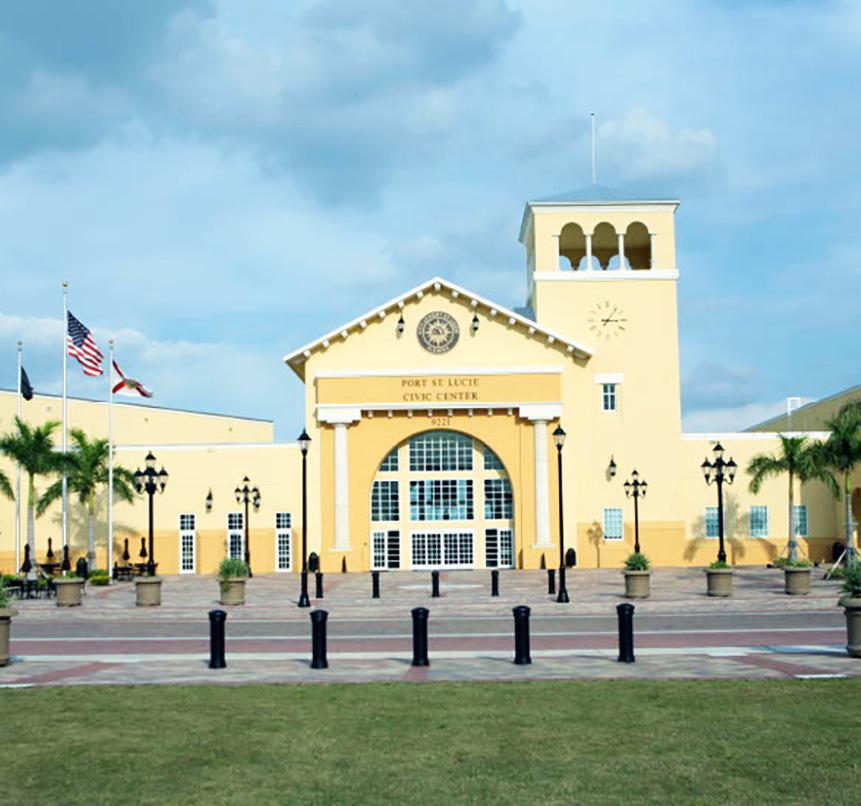
Taken as a whole, Armstrong looks around the state and feels positive about the impact the water management districts, DEP and local counties and municipalities are making. To keep Florida’s water clean and plentiful will take all hands on deck.
“The five of us (districts) get along really well to the point that, if a district is doing something well, we can ask how they did and help figure things out,” Armstrong said. “We all work with DEP the same way.

“Right now we have a really good group of folks in leadership, and there’s no turf war. We want to find the best ways to move Florida forward.”





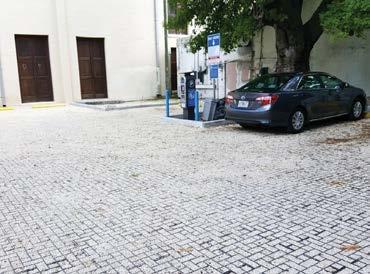




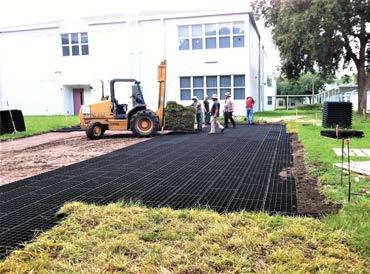

As Florida’s metropolitan areas continue to expand and even bleed into one another, the list of projects demanded by both the private and public sectors grows. Agencies, developers, architects, engineers, and contractors all face the challenge of securing the necessary resources to deliver these projects to the public.
Hiring and retaining qualified staff is a burden we struggle to overcome. Florida has an undeniable talent deficit, including licensed professionals, skilled laborers and technically trained support staff, such as marketers.
Various surveys over the years have reported a consistent figure; on average, marketing staff account for about 3% of most AEC firms’ total employment. That works out to about one marketing professional for every 33 to 35 staff members.
Many firms fall short of this ratio, and even those that do meet it can face chronic issues with employee burnout amongst their marketing team(s). According to seasoned AEC marketer Jen McGovern, CPSM, in her educational session, You Can’t Say that in Marketing, the average tenure of a marketer in the AEC industry is only two years. That is largely because marketers are often expected to handle an inappropriately extensive workload, and staff are often kept at “skeleton crew” numbers.
The roles of marketing staff vary widely from firm to firm. Some are exclusively focused on supporting efforts to secure new work. Others handle varying degrees of business development, company culture initiatives, recruiting, corporate communications, etc.
In practice, SMPS agrees that 3% represents an acceptable bare minimum for traditional marketing services and that an appropriate range is generally between 3-5% of a firm’s total staff. However, the more roles assigned to a marketing team, the higher that percentage should be to enable the team to specialize and adequately disperse the workload. While the term “marketing” can encompass many different and critical responsibilities that every firm depends upon to succeed and grow, it does not mean that any single marketer should be expected to perform all, or even most, of those responsibilities.
They need a team. We all need teams.
SMPS publications, including Markendium and Blueprints 3.0, can provide detailed breakdowns of the appropriate marketing roles that a firm should strive to fulfill at different stages of growth.
Universities and colleges across Florida churn out engineers every year, and vocational schools train CAD designers, surveyors and construction workers—men and women complete those programs with a relatively clear understanding of the field they will find themselves in come graduation.
While many schools have marketing degree programs, none introduce a career path in AEC marketing. That means that marketing professionals who enter this industry by chance are specially trained on the job and possess unique areas of expertise worthy of our protection.
Firm leaders must be as cognizant of the risk of burnout in support staff as much as any “technical” team member. With the appropriate levels of support and staff, marketing can consistently deliver the vital support necessary to win work and grow—enabling their firms to support Florida’s growth.
As discussed, the pool of qualified AEC marketing candidates is shallow, but existing and developing avenues exist to reach available talent.
Every SMPS chapter in Florida offers a job board through their website visible to members. Firms are encouraged to advertise marketing-related positions through their local chapters to reach the most qualified pool of candidates.
Some chapters, including SMPS Tampa Bay, are building inroads with area universities to introduce and educate students about career opportunities in AEC marketing. The goal is to develop a steady stream of eager young talent to fuel our growing industry and our growing firms.
When assessing what Florida’s growth means for the growth of your firm, keep in mind that with every new project manager hired, and every new service line introduced, an added weight is put on your marketing staff to support additional proposals and promote new capabilities to clients.
By maintaining open lines of communication with your marketing staff, you can monitor attitudes about workload to prevent burnout and identify when it’s appropriate to scale up the team. Beyond that, it can help identify opportunities for expansion into new areas of specialization within your marketing team, ultimately supporting your firm’s overall goals, growth and longterm success.
At Jacobs, we see an opportunity to keep the world moving forward. We understand the transportation landscape and how it’s evolving to ensure a more resilient and sustainable future. When it comes to navigating the challenges and complexities involved in building roads, we are up to the challenge.
We tackle the world’s toughest challenges. Follow us @JacobsConnects | jacobs.com

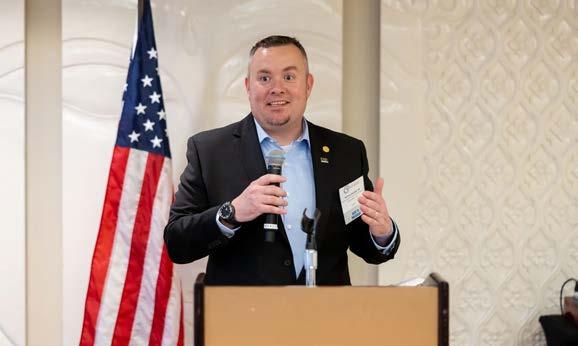
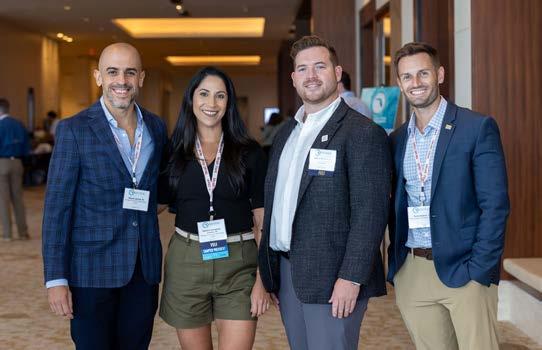
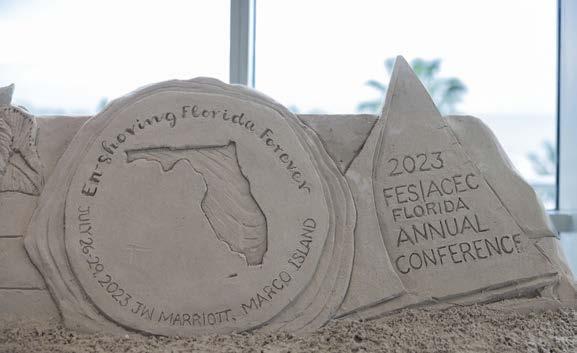
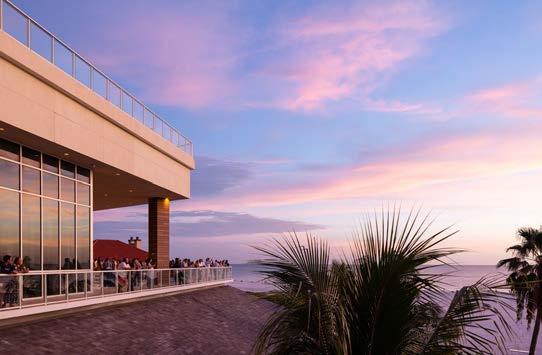
 2023 FES | ACEC Florida Annual Conference, Marco Island
Alfredo Layrisse, Deborah Hernandez-Cedeno, Jamison Edwards, Trevor Hawkins
2023 FES | ACEC Florida Annual Conference, Marco Island
Alfredo Layrisse, Deborah Hernandez-Cedeno, Jamison Edwards, Trevor Hawkins
As employee owners, we’re driven to care. We work hard every day to create a more connected future where everyone can thrive. We don’t just get it done – we get it done right.


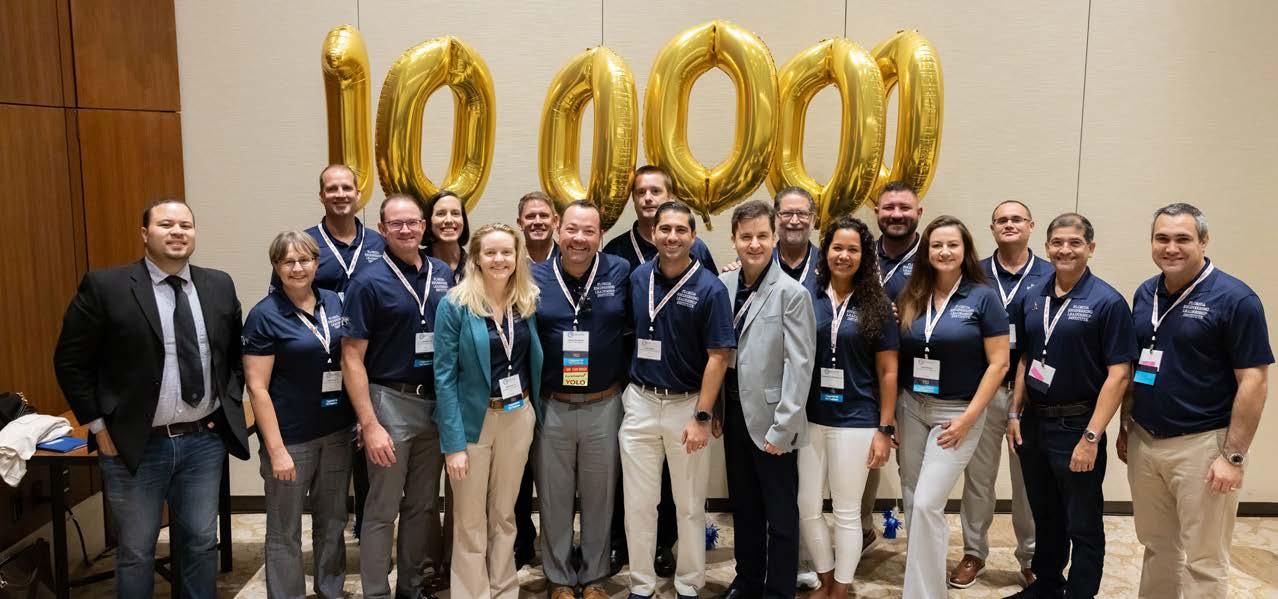
Start your exceptional journey today. Full-service A/E/C solutions at rsandh.com.
 FELI Class of 2023 raised over $100,000 for hurricane ravaged communities.
Left: Dustin Mills, Joshua Nolin
FELI Class of 2023 raised over $100,000 for hurricane ravaged communities.
Left: Dustin Mills, Joshua Nolin
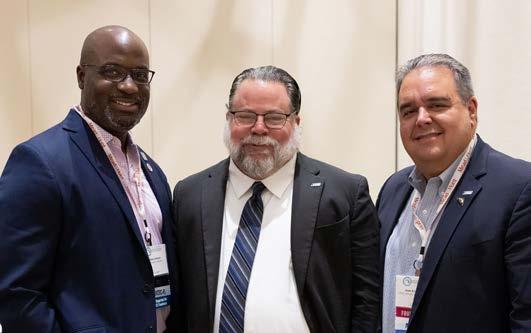

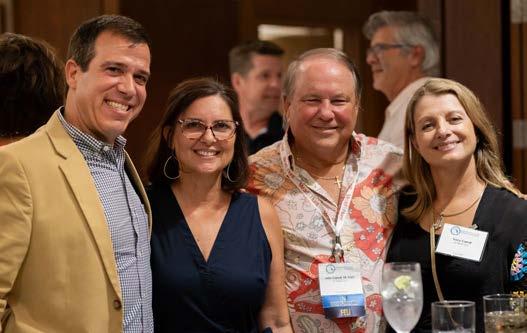
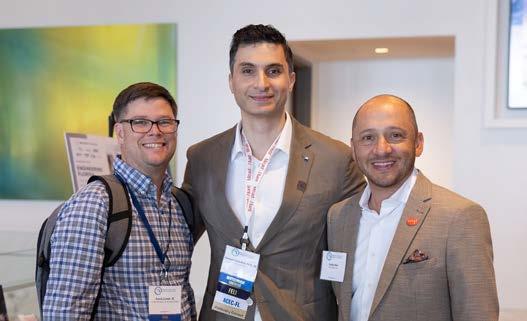
 Brent Wilkins with FELI Class of 2023, and their mascot Felix
David Cowan, Ben Golestani, Carlos Alba
FES Student Members Jillian Malavet, Veronica Calzadilla Sosa, Alexandra Jimenez
Michael DelCharco, Sheila DelCharco, John Carroll, Tracy Carroll
Brent Wilkins with FELI Class of 2023, and their mascot Felix
David Cowan, Ben Golestani, Carlos Alba
FES Student Members Jillian Malavet, Veronica Calzadilla Sosa, Alexandra Jimenez
Michael DelCharco, Sheila DelCharco, John Carroll, Tracy Carroll

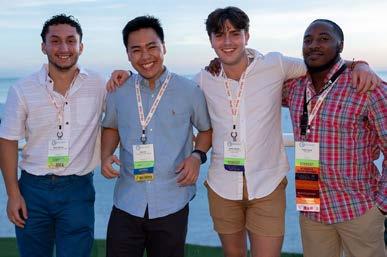
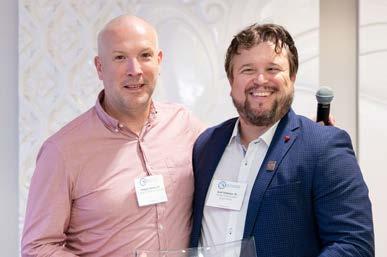

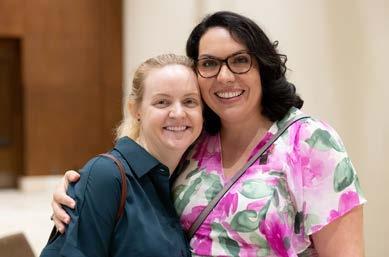

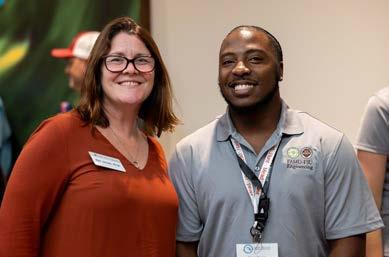

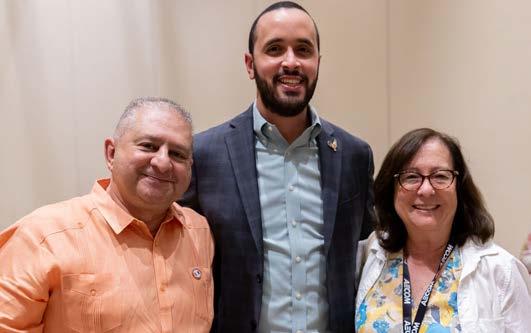

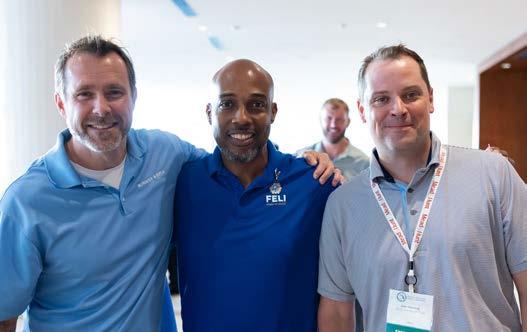
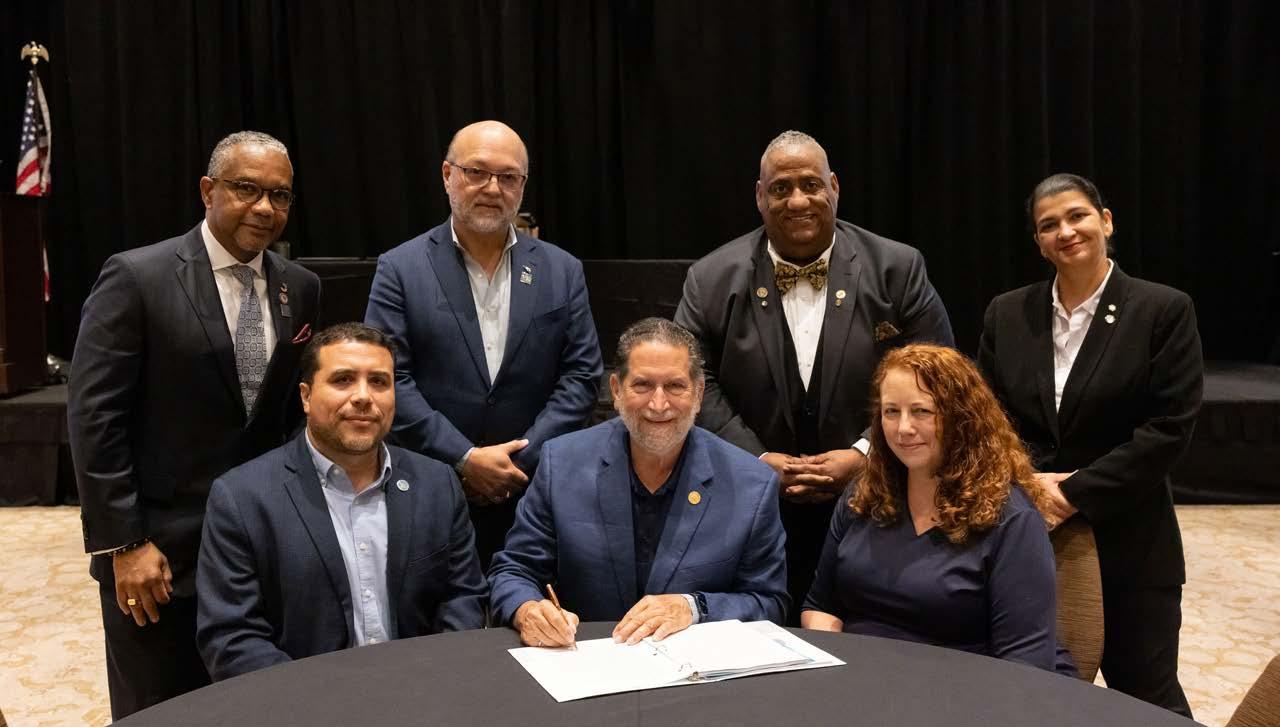
Are you looking to get your company in front of industry professionals, firm leaders, government officials, business leaders and potential clients from every part of Florida? If you are doing business anywhere in the engineering or consulting space in the Sunshine State, this is exactly the valuable audience you want to reach.

US POSTAL SERVICE STATEMENT OF OWNERSHIP MANAGEMENT AND CIRCULATION
Engineering Florida, ISSN 0015-4032, is published quarterly as the official publication of the Florida Engineering Society. Copyright 2023. All rights reserved. FES members receive Engineering Florida as part of their membership benefits. Editorial matter, change of address, and correspondence regarding advertising should be mailed to: FES, P.O. Box 750, Tallahassee, FL 32302 or email fes@fleng.org.
Mailing Address of Office of Publication, General Business Office, Publisher: Allen Douglas, Owner:
Engineering Society, P.O. Box 750, Tallahassee, FL 32302-0750
The purpose, function, and nonprofit status of this organization and the exempt status for federal income tax purposes has not changed during preceding 12 months.

